Hey food lovers, get ready for a wild ride through the crazy-delicious world of Chinese cuisine! China, the most populated place on Earth, has a food history that’s been cooking for ages (literally, thousands of years). With such a massive land and a whole lot of culture, it’s no wonder their food game is off the charts. Think smokin’ hot street eats to fancy feasts – they’ve got it all!
In this tasty lil’ article, we’re gonna chow down on 29 of the most popular foods in China, learning what makes them so special and how they’re traditionally whipped up. So, let’s get this food party started – exploring China’s scrumptious world, one bite at a time!
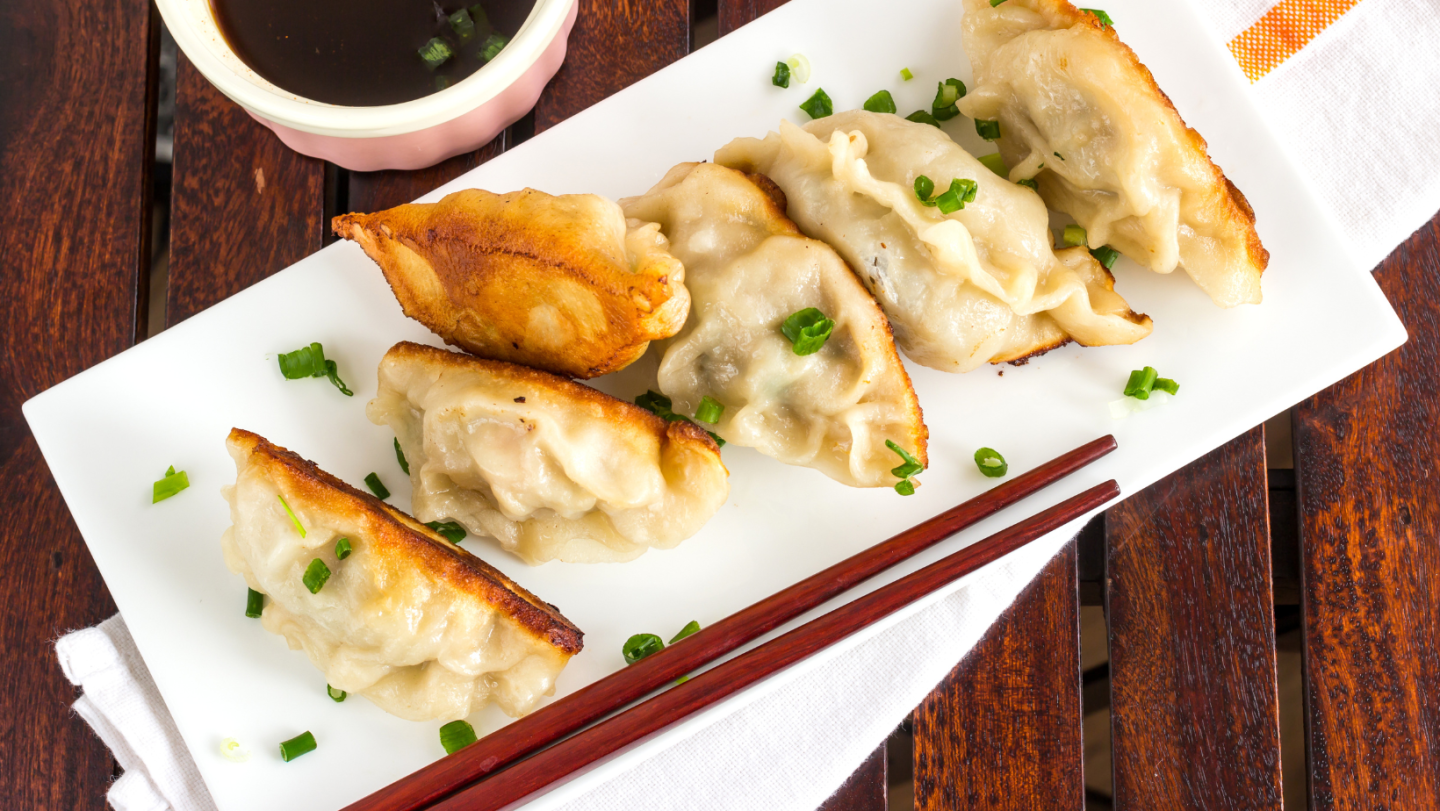
1. Dumplings
History
Dumplings, also known as “jiaozi” (饺子), have been a staple of Chinese cuisine for over 1,800 years. They originated during the Han Dynasty, and legend has it that a famous Chinese physician named Zhang Zhongjing invented the first dumplings to help people stay warm during harsh winters. Nowadays, dumplings represent family reunion and prosperity, particularly during the Chinese New Year festivities.
Traditional Preparation
Conventional Chinese dumplings boast a simple dough crafted from flour and water, forming the canvas for a delicious medley of fillings. These fillings feature an array of choices, such as ground pork, shrimp, chicken, beef, vegetables, or imaginative combinations thereof. The dough is meticulously rolled into delicate, circular envelopes, which are then generously laden with the selected mixture. Each dumpling is carefully sealed before being steamed, boiled, or pan-fried to culinary excellence. To elevate the taste sensation, dipping sauces like savory soy sauce, tangy black vinegar, or fiery chili oil frequently accompany these delectable parcels.
Check out our favorite recipe here.
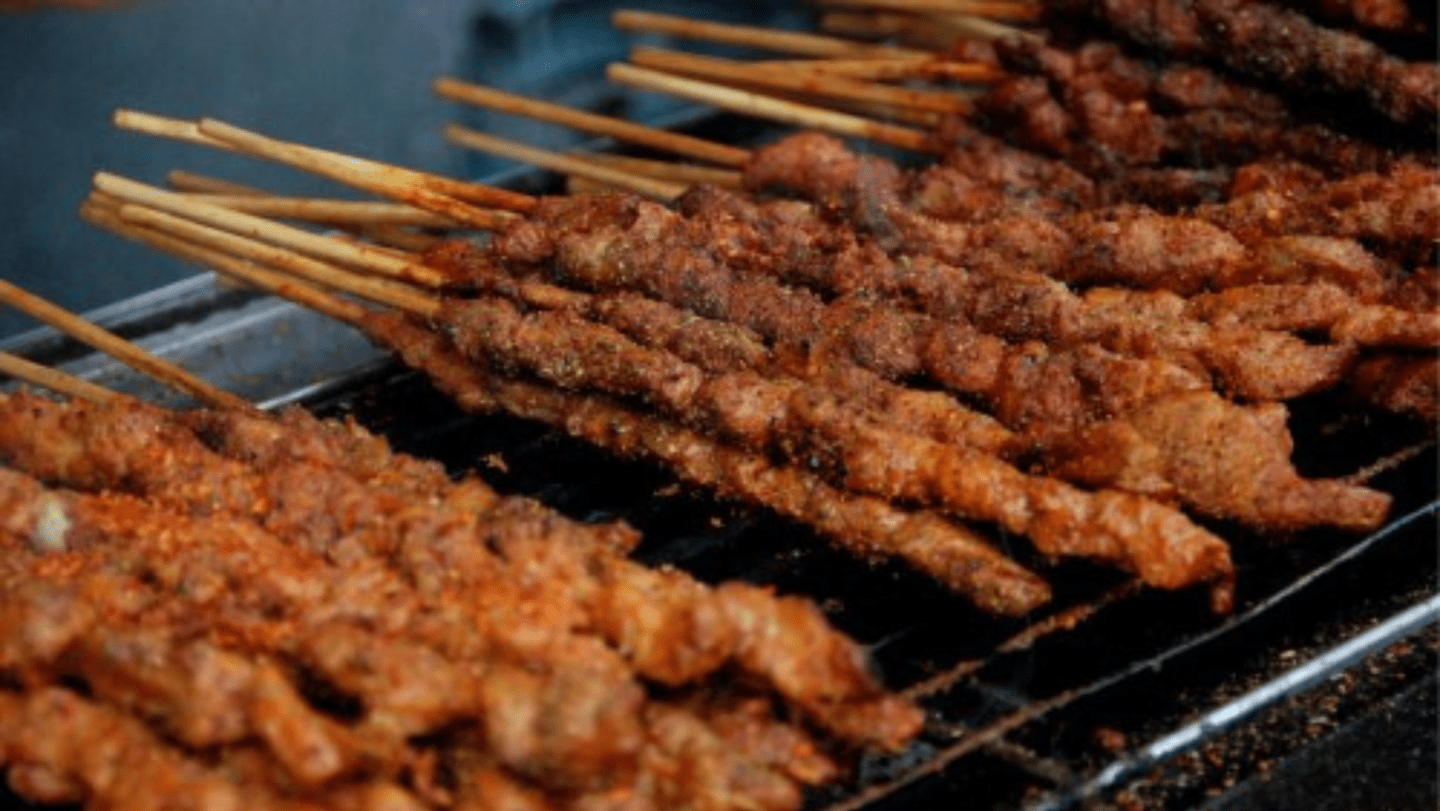
2. Proper Street Kebabs
History
Originating from the Xinjiang region of China, street kebabs—also known as chuan’r (串儿)—owe their heritage to the area’s sizable Muslim population. This sought-after street food has been shaped by the flavors of Middle Eastern and Central Asian culinary traditions. Over time, it has permeated the length and breadth of China, capturing the hearts and taste buds of people nationwide.
Traditional Preparation
Authentic street kebabs are crafted by threading bite-sized morsels of well-seasoned meat, typically lamb or beef, onto skewers and grilling them to perfection over open flames. The meat is marinaded with an enticing blend of spices, such as cumin, garlic, chili powder, and salt, creating something utterly delicious. Once cooked to perfection, these tantalizing kebabs are adorned with a sprinkling of sesame seeds and accompanied by a side of piquant or zesty dipping sauce.
Check out our favorite recipe here.
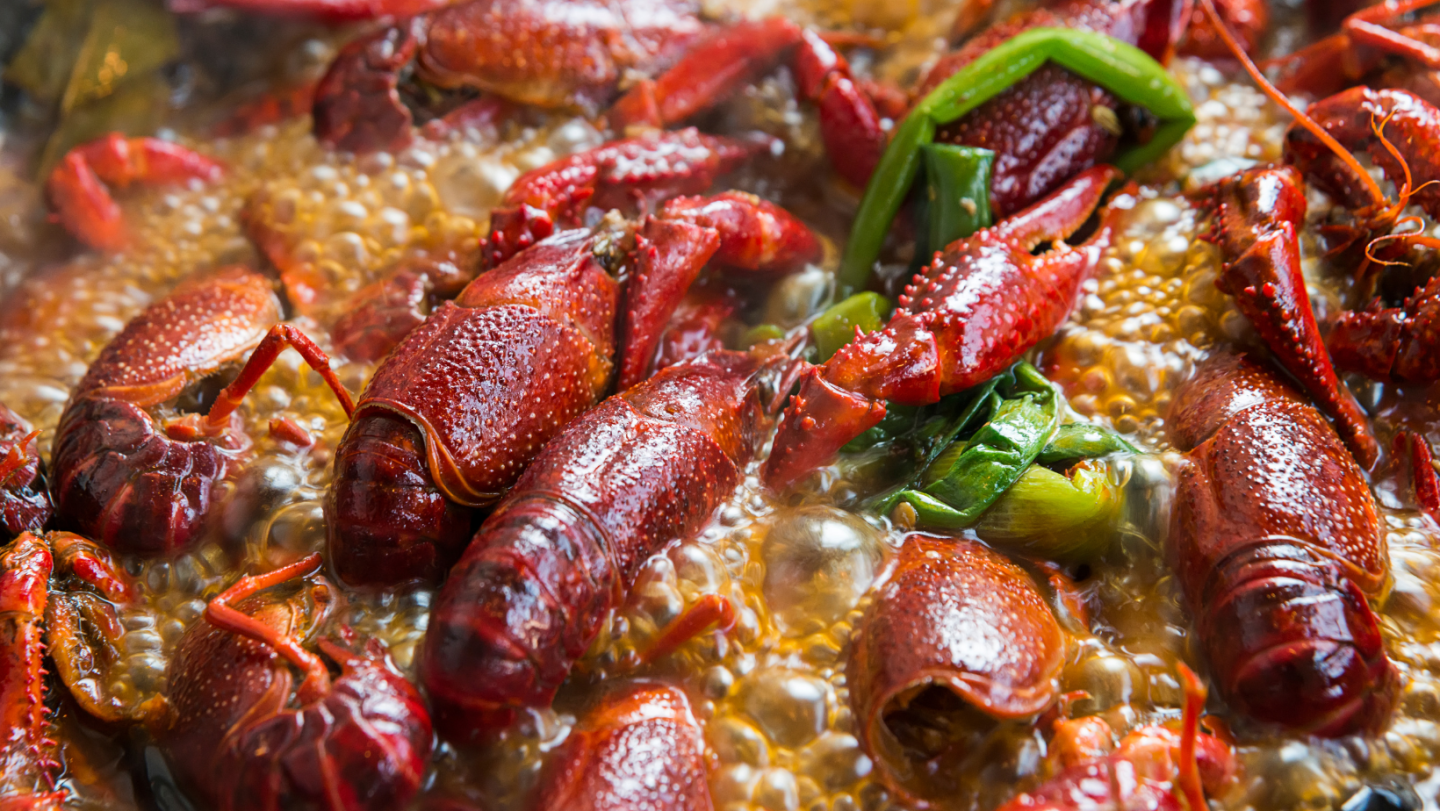
3. Spicy Crayfish
History
Má lā xiāo lóng xiā (麻辣小龙虾), or spicy crayfish, is a fairly recent culinary creation that has swiftly captured the hearts of Chinese food aficionados. Emerging in the 1990s from the city of Nanjing, this delectable dish skyrocketed in popularity thanks to its alluring fusion of fiery and savory tastes.
Traditional Preparation
Creating the tantalizing spicy crayfish dish begins with boiling the crustaceans in water infused with fragrant spices such as ginger, garlic, and star anise. Next, they are stir-fried with a captivating mixture of spices like Sichuan peppercorns, dried chilies, and chili bean paste, resulting in a tongue-tingling, fiery experience. The dish is frequently adorned with green onions and accompanied by steamed white rice, providing a soothing counterbalance to the heat.
Check out our favorite recipe here.
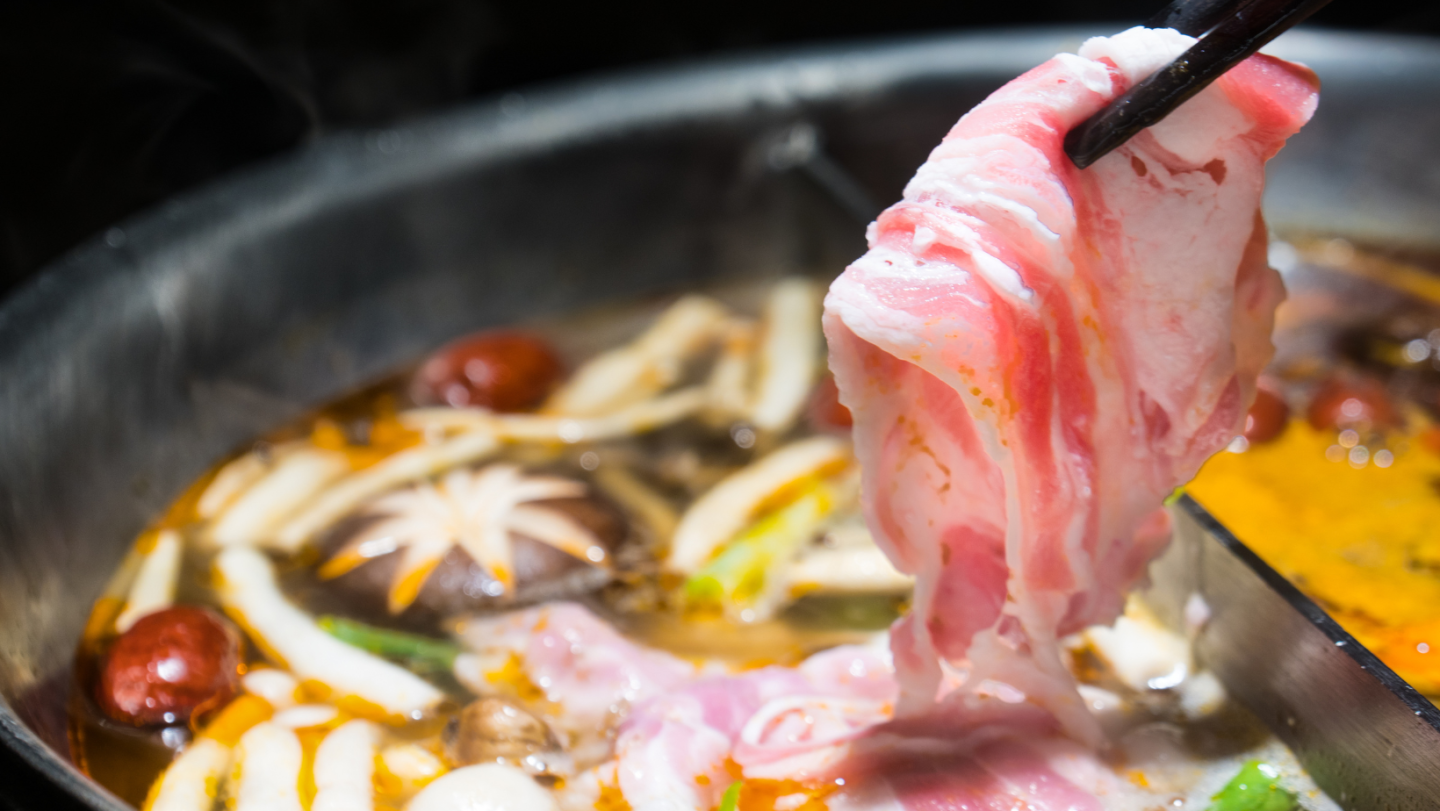
4. Lamb Hot Pot
History
Lamb hot pot, or yáng ròu shuàn (羊肉涮), is a traditional Chinese dish with roots in the Mongolian culture. It became popular during the Yuan Dynasty when Mongolians ruled over China. This dish is particularly popular during the colder months, as its warm broth and hearty ingredients provide a comforting and satisfying meal.
Traditional Preparation
Lamb hot pot is centered around a simmering pot of rich, flavorful broth, often made with a combination of lamb bones, Chinese herbs, and spices. Thinly sliced lamb, along with a variety of vegetables, mushrooms, and tofu, are cooked at the table by the diners themselves, as they’re dipped into the bubbling broth using chopsticks or a wire strainer. Once cooked, the ingredients are typically dipped in sesame sauce or other condiments before being enjoyed. The remaining broth is often consumed as a soup after all the ingredients have been cooked and eaten.
As the meal progresses, the broth becomes richer and more flavorful, having absorbed the essence of the lamb and other ingredients. This shared dining experience offers not only a scrumptious meal but also a fantastic opportunity for nurturing bonds and sparking lively discussions among loved ones and friends.
Check out our favorite recipe here.
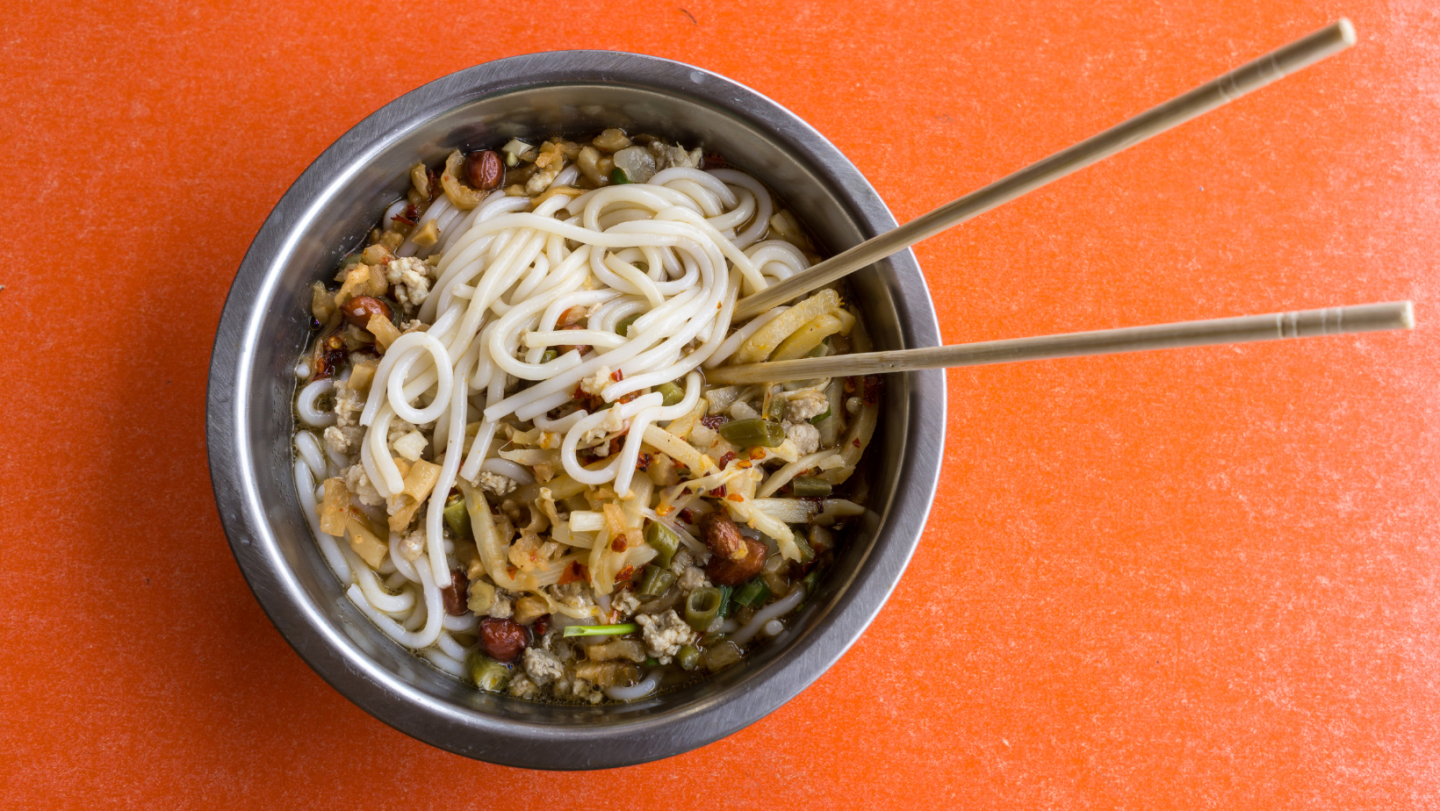
5. Guilin Rice Noodles
History
Referred to as Guilin mifen (桂林米粉) in Chinese, Guilin rice noodles have their roots in the picturesque city of Guilin, located in the Guangxi Zhuang Autonomous Region of southern China. Boasting a rich history spanning over 2,000 years, this dish has continually evolved and been refined, making it a quintessential element of Guilin’s local culture, beloved by residents and visitors alike.
Traditional preparation
The main ingredients of Guilin rice noodles are rice and water, which are ground together to create a smooth and elastic dough. The dough is then extruded into thin strands and boiled until they become soft and slightly chewy. Usually accompanied by a savory broth crafted from pork, beef, or a blend of both, these noodles also feature an assortment of toppings such as fried peanuts, pickled veggies, thin slices of meat, and chili sauce. This dish is frequently relished as a breakfast or lunch choice, and is cherished for its delicate, invigorating flavors and pleasing texture.
Check out our favorite recipe here.
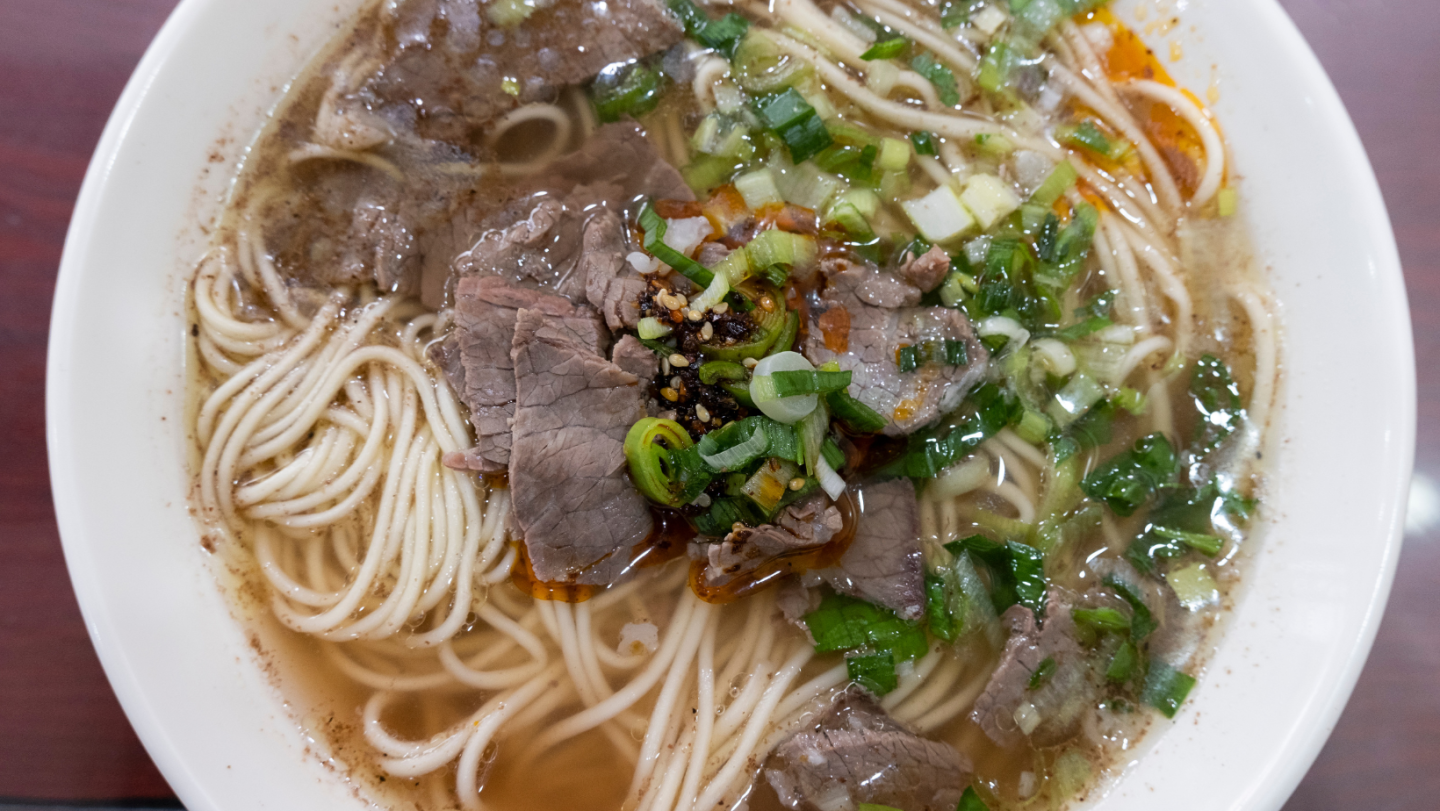
6. Lanzhou Hand-pulled Noodles
History
Lanzhou hand-pulled noodles, also known as Lanzhou lamian (兰州拉面), originated in the city of Lanzhou in Gansu Province, northwestern China. Tracing its origins to the early Qing Dynasty (1644-1911), this dish was developed by the Hui people, a Muslim ethnic group in China. Over time, it has made its way across the nation and even gained popularity worldwide.
Traditional preparation
The key to Lanzhou hand-pulled noodles is the art of noodle pulling, a skill that requires years of practice to master. Water and wheat flour are combined and then kneaded together until the dough achieves the perfect texture. The dough is then repeatedly stretched, twisted, and folded, transforming it into long, thin strands of noodles. These noodles are boiled quickly and served with a flavorful, clear broth made from beef or mutton, and topped with thinly sliced meat, radish, and cilantro. The dish is celebrated for its delicate, springy noodles and the deeply satisfying taste of the broth.
Check out our favorite recipe here.
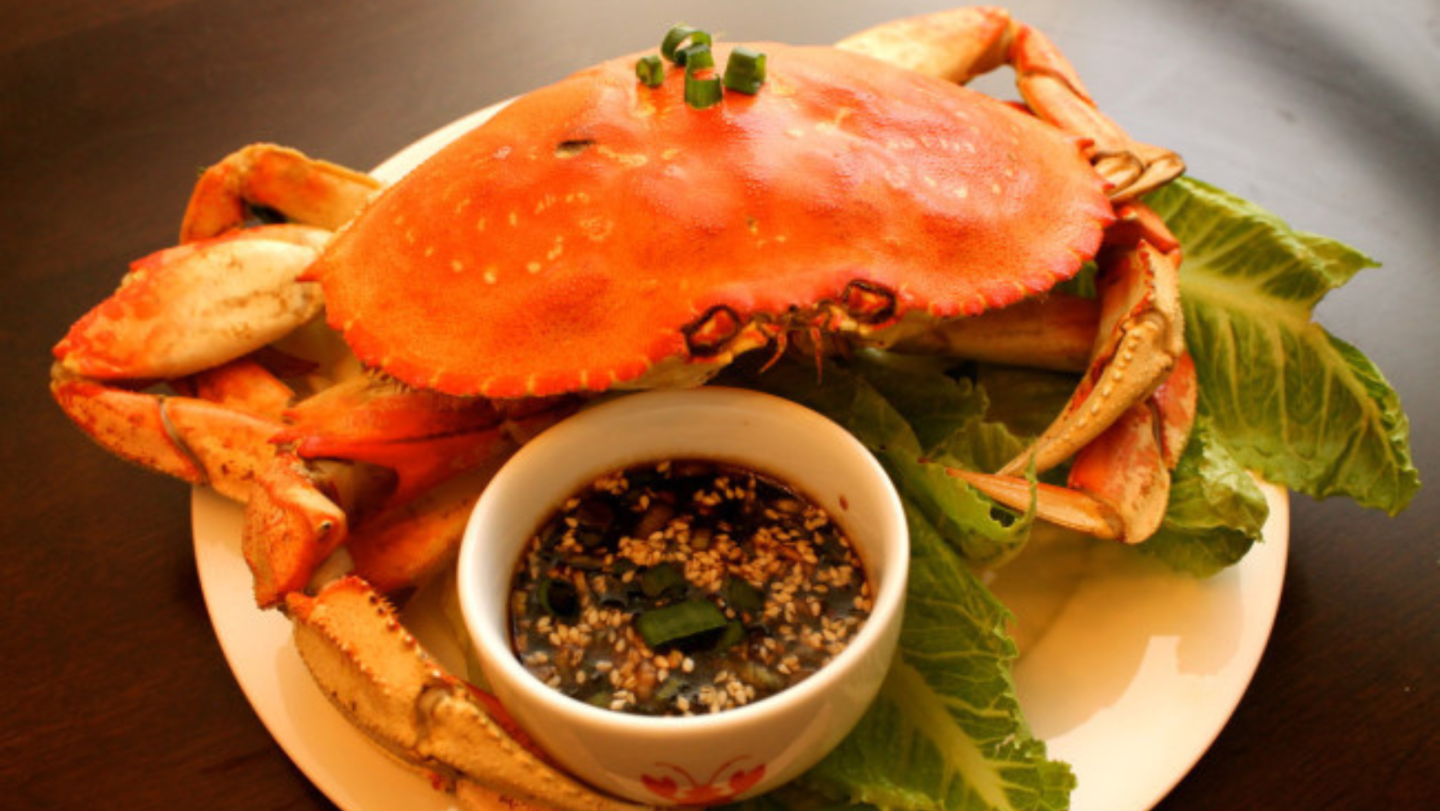
7. Steamed Crab
History
The tradition of steamed crab in Chinese cuisine dates back centuries, with documented instances reaching as far back as the Tang Dynasty (618-907). This dish is especially popular in coastal regions where fresh seafood is abundant. It has become a symbol of prosperity and is often served during special occasions and family gatherings.
Traditional preparation
To start, one must first handpick lively, pristine crabs, followed by a thorough cleaning and prepping process. Next, the crabs are nestled within a basket and steamed at high temperatures. The crux of crafting flawless steamed crab lies in maintaining its tender, juicy essence without compromising the fragile meat.
When they’re done, the crab is customarily accompanied by an enticing sauce, derived from a fusion of soy sauce, vinegar, ginger, garlic, and a medley of other flavors. The dish captivates palates with its inherent sweetness, delectable tenderness, and the sauce’s ability to elevate the experience. Steamed crab embodies an ode to the ocean’s treasures while highlighting the simple sophistication of Chinese culinary artistry.
Check out our favorite recipe here.
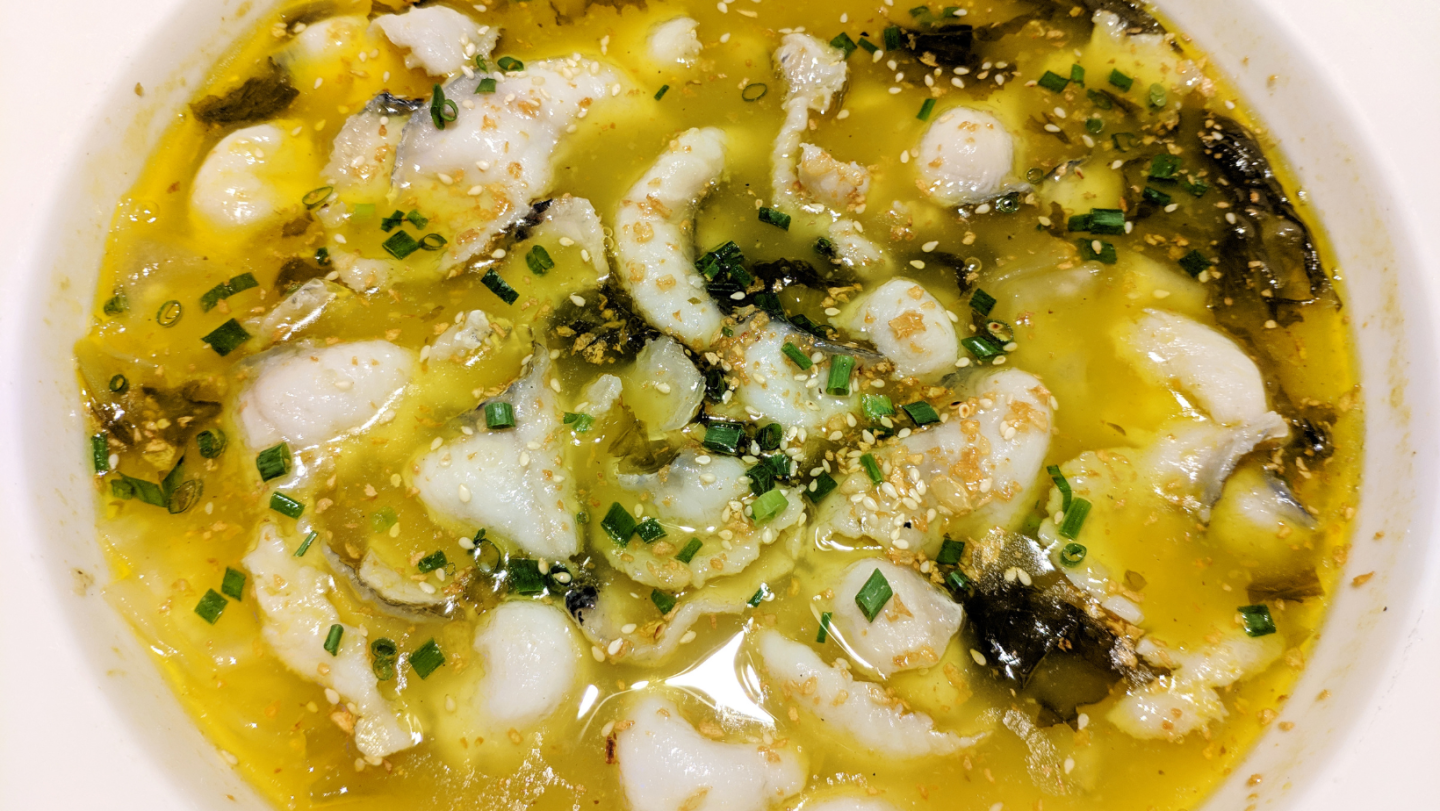
8. Fish with Sichuan Pickles
History:
Fish with Sichuan pickles, known as Suan Cai Yu (酸菜鱼) in Chinese, is a popular dish from the southwestern province of Sichuan. This dish originated from the Chongqing region and has a history of over 100 years. Renowned for its bold and spicy flavors, Fish with Sichuan pickles showcases the unique characteristics of Sichuan cuisine.
Traditional preparation:
To prepare this dish, fresh fish, usually carp or catfish, is first cleaned and sliced. Sichuan pickles, or suan cai, are fermented mustard greens that provide a tangy and slightly sour taste. The fish is cooked in a spicy broth made with Sichuan pickles, doubanjiang (broad bean chili paste), ginger, garlic, dried chili peppers, and Sichuan peppercorns. As a final touch, scallions and cilantro are added to the dish for garnish. The mix of sour, spicy, and savory flavors creates a pleasing and delectable experience that will leave your taste buds craving more.
Check out our favorite recipe here.
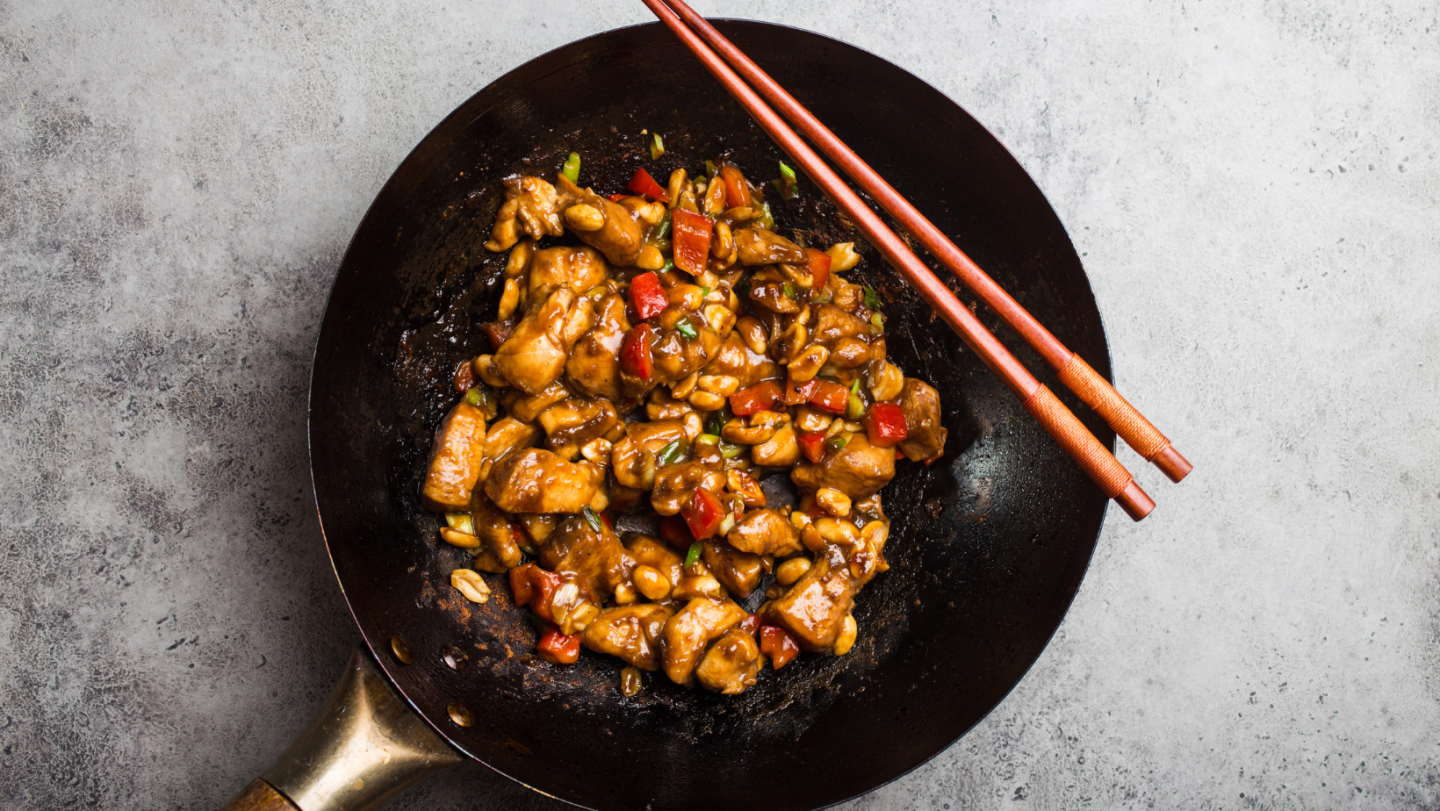
9. Kung Pao Chicken
History:
Kung Pao Chicken, or Gong Bao Ji Ding (宫保鸡丁) in Chinese, is a classic Sichuan dish with a history dating back to the Qing Dynasty. The dish is named after Ding Baozhen, a Qing Dynasty official who was known as Kung Pao. This dish gained popularity outside of China, with various adaptations to suit different palates.
Traditional preparation:
Kung Pao Chicken is a delightful dish that consists of diced chicken stir-fried alongside peanuts, dried chili peppers, and Sichuan peppercorns. Marinate the chicken in soy sauce, cornstarch, and rice wine, then heat up a wok and add some oil, the marinated chicken, peanuts, dried chili peppers, and Sichuan peppercorns. The final touch is a sauce made from soy sauce, vinegar, sugar, and cornstarch, which thickens while cooking. What makes Kung Pao Chicken truly stand out is its intricate blend of sweet, sour, and spicy flavors.
Check out our favorite recipe here.
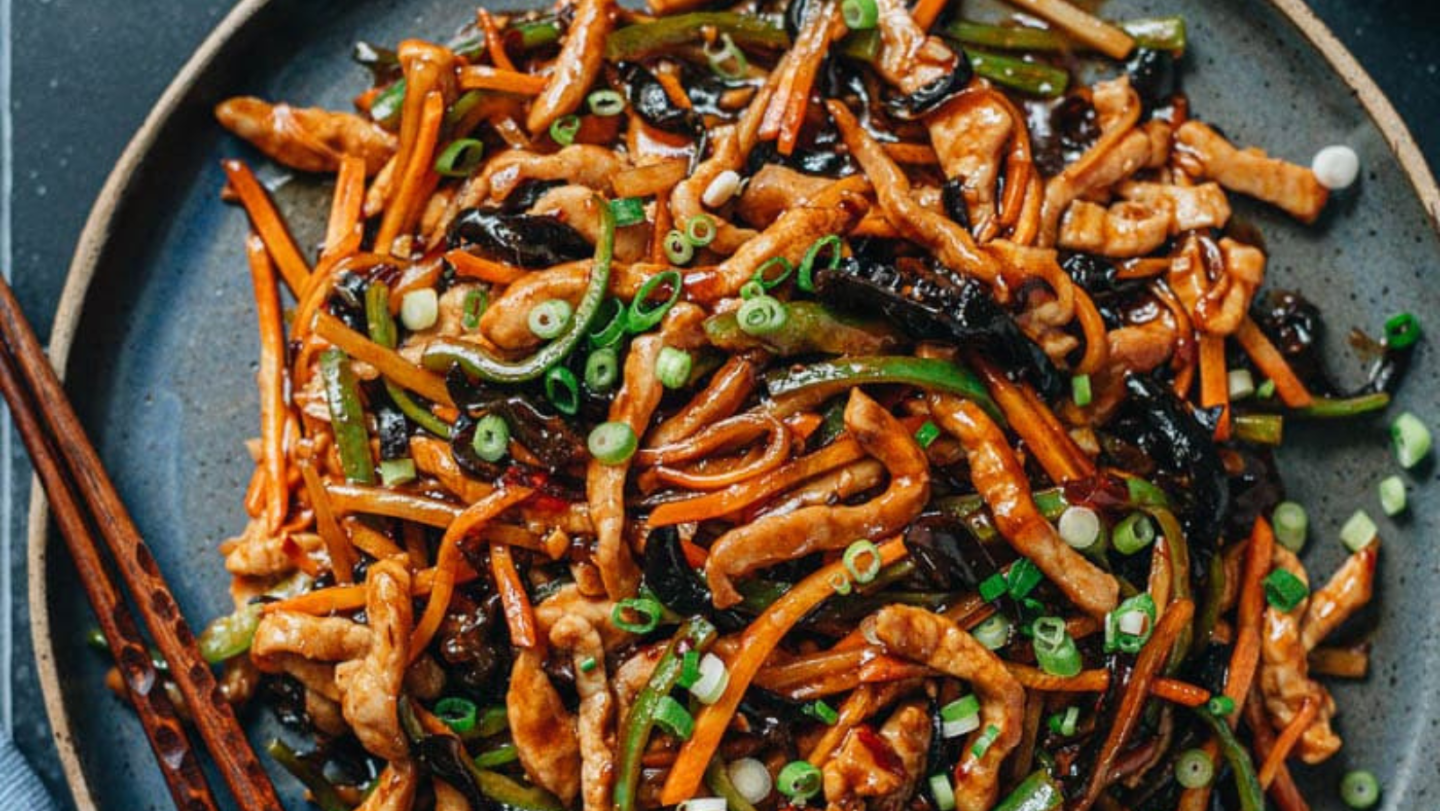
10. Shredded Pork with Garlic Sauce
History:
Shredded Pork with Garlic Sauce, also known as Yu Xiang Rou Si (鱼香肉丝) in Chinese, is a beloved classic in Sichuan cuisine. Interestingly, even though the name suggests otherwise, there’s no fish in the dish. The term “yu xiang” (鱼香) means “fish fragrance” and it actually refers to the sauce’s unique flavor profile, which was traditionally used in fish dishes.
Traditional preparation:
When it comes to preparing Shredded Pork with Garlic Sauce, start by thinly slicing lean pork and marinating it in a blend of soy sauce and cornstarch. The dish also incorporates a variety of ingredients, including wood ear mushrooms, bamboo shoots, and bell peppers.
For the sauce, combine soy sauce, vinegar, sugar, cornstarch, and chili bean paste, then stir-fry this mixture with garlic, ginger, and scallions. As you stir-fry the marinated pork and vegetables in a wok, save the sauce for the final moments of cooking.
Shredded Pork with Garlic Sauce, famous for its distinctive and bold flavors, masterfully mixes sweet, sour, spicy, and savory elements. This delectable dish is a testament to the intricate layering of flavors that Sichuan cuisine is known for.
Check out our favorite recipe here.
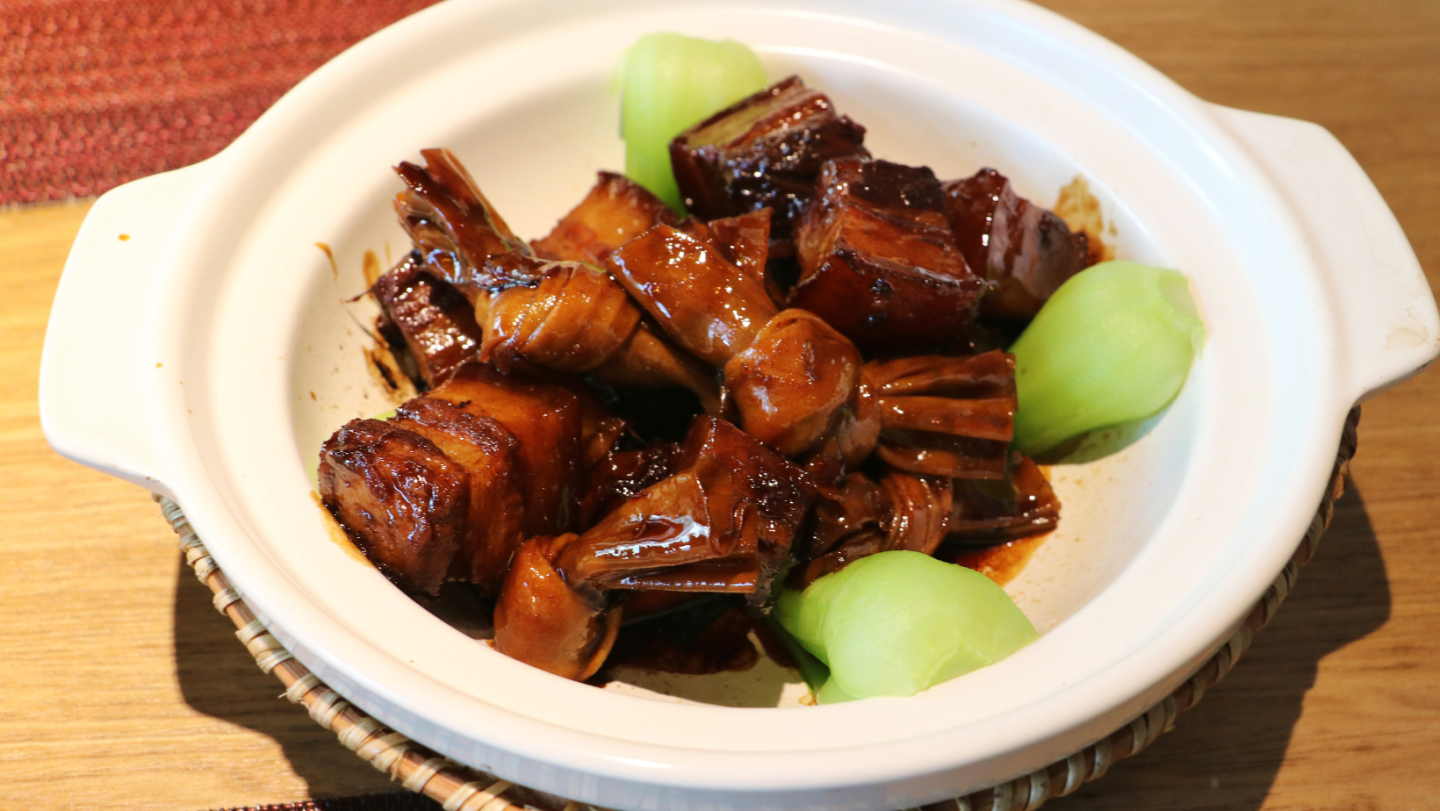
11. Red Braised Pork
History:
Red Braised Pork, or Hong Shao Rou (红烧肉) in Chinese, is a traditional dish that originates from the Jiangnan region, which includes Shanghai and surrounding areas. The dish has a long history, dating back to the Song Dynasty. It was also reportedly a favorite dish of Chairman Mao, which further popularized it throughout China.
Traditional preparation:
Crafting Red Braised Pork begins with pork belly, sliced into bite-sized morsels and briefly boiled to eliminate impurities. Next, the dish is gently simmered in a blend of soy sauce, Shaoxing wine, sugar, star anise, cinnamon, and ginger, allowing the pork to become tender and soak up the rich flavors. As a result of the cooking process, a shiny, reddish-brown sauce envelops the pork, infusing it with a savory taste and a touch of sweetness. The velvety texture and profound flavors contribute to the widespread popularity and comforting nature of Red Braised Pork.
Check out our favorite recipe here.
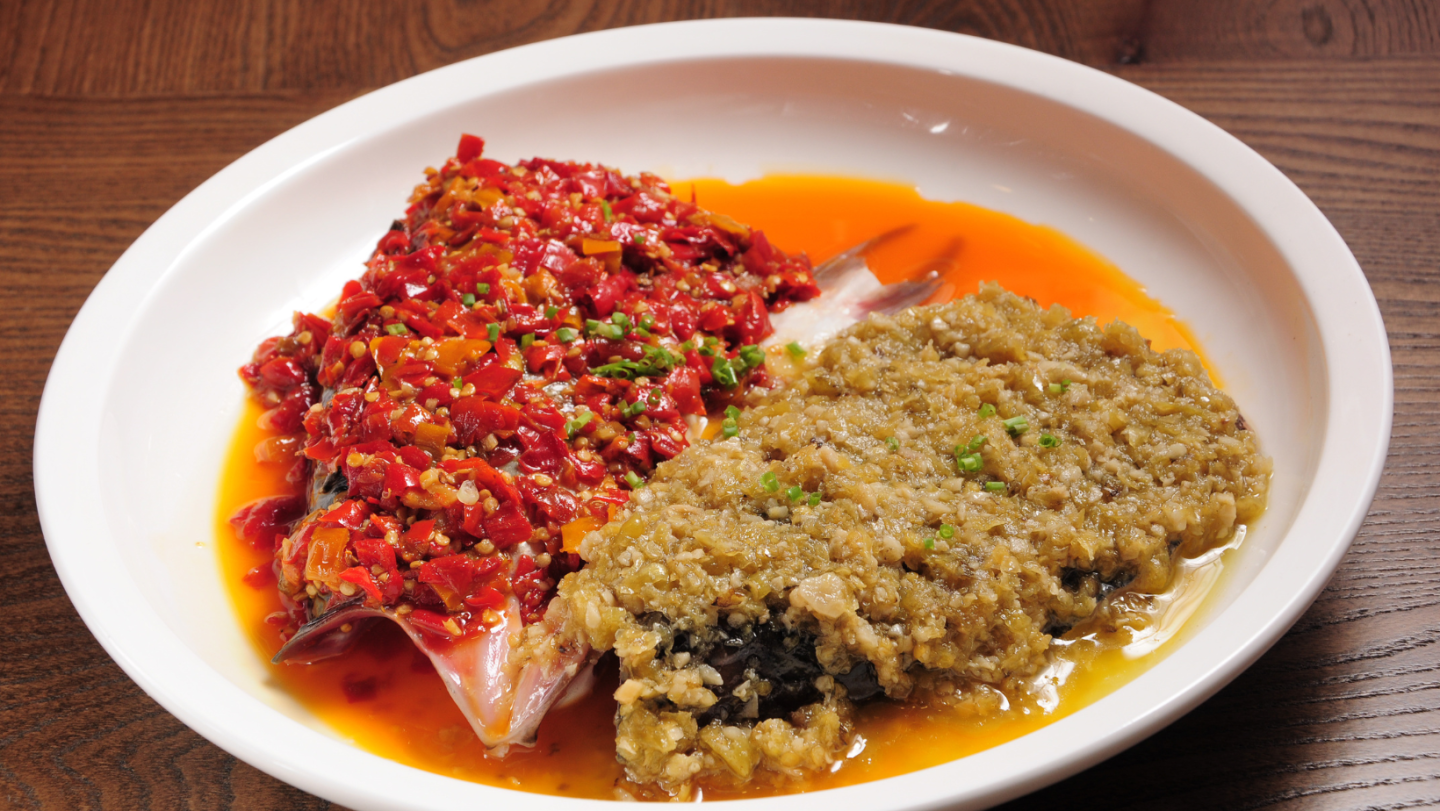
12. Steamed Fish Head with Diced Hot Red Peppers
History:
Steamed Fish Head with Diced Hot Red Peppers, or Duo Jiao Yu Tou (剁椒鱼头) in Chinese, is a traditional Hunan dish with a history dating back to the Ming Dynasty. This dish showcases the bold and spicy flavors typical of Hunan cuisine and has become increasingly popular throughout China in recent years.
Traditional preparation:
To prepare Steamed Fish Head with Diced Hot Red Peppers, a large fish head, typically from a carp or grass carp, is first cleaned and scored to allow the flavors to penetrate. The fish head is then marinated with Shaoxing wine, ginger, and scallions for a brief period. The star of the dish, the diced hot red peppers, are mixed with garlic, ginger, and fermented black beans to create a flavorful paste. The fish head is steamed with this paste on top, allowing the spicy and aromatic flavors to infuse the fish. The dish is then garnished with cilantro and served hot, providing a fiery and flavorful experience.
Check out our favorite recipe here.
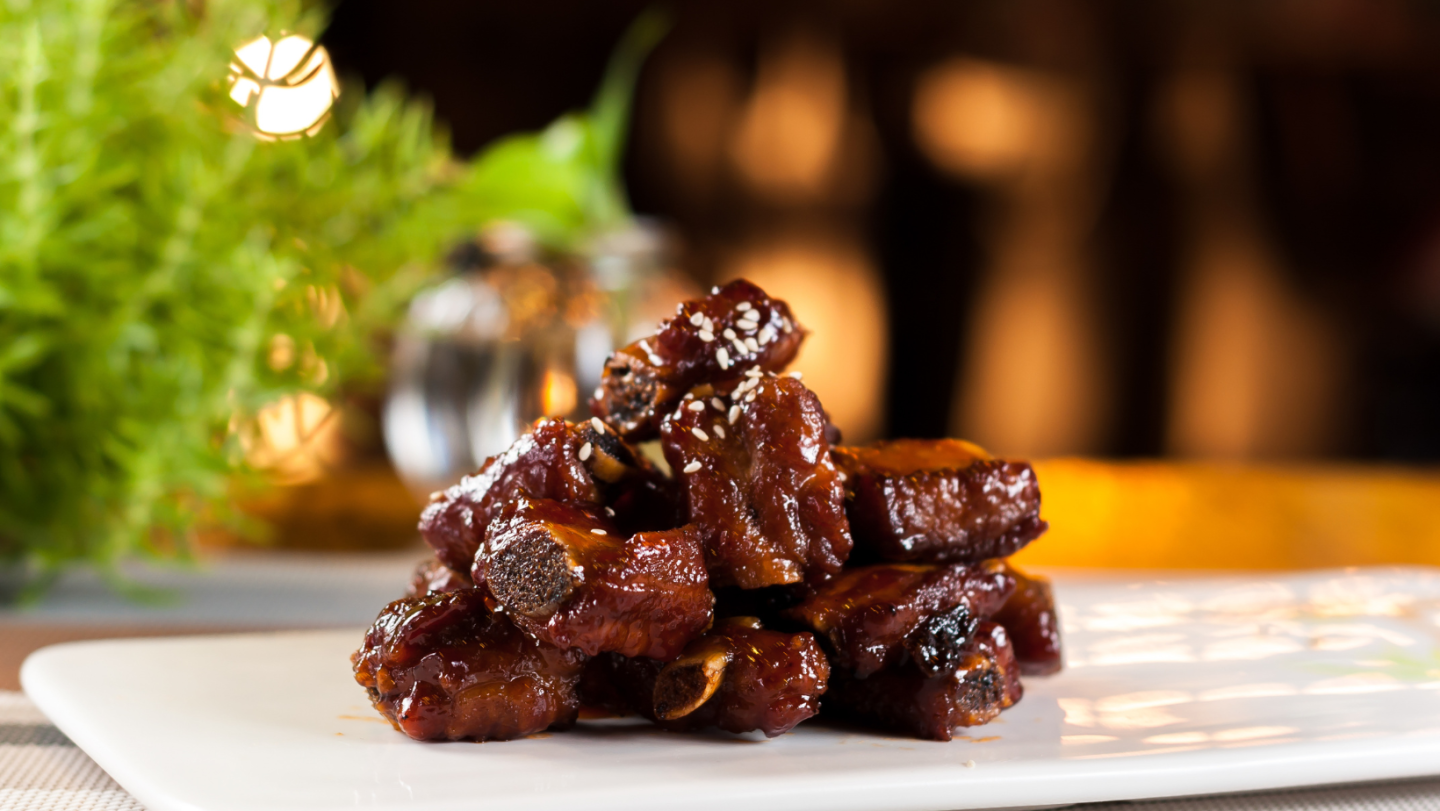
13. Sweet and Sour Ribs
History:
Sweet and Sour Ribs, or Tang Cu Pai Gu (糖醋排骨) in Chinese, is a popular dish in Chinese cuisine, with various regional variations. The dish’s history can be traced back to the Shandong and Jiangsu provinces, both known for their sweet and sour culinary traditions. Over time, Sweet and Sour Ribs have become a favorite among Chinese households and restaurants alike.
Traditional preparation:
Pork ribs form the foundation of Sweet and Sour Ribs, initially marinated in a blend of soy sauce, rice wine, and cornstarch. Once marinated, the ribs undergo deep-frying, achieving a golden brown crispiness. A sweet and sour sauce, concocted from sugar, vinegar, soy sauce, ketchup, and cornstarch, is then prepared. Subsequently, the fried ribs are stir-fried in the sauce, ensuring they become coated and infused with the flavors. The dish reaches completion with a sprinkle of sesame seeds and a scattering of chopped green onions. Renowned for their harmonious interplay of sweet and tangy notes, Sweet and Sour Ribs also offer a delightfully crispy texture.
Check out our favorite recipe here.

14. Mapo Tofu: Stir-fried Tofu in Hot Sauce
History:
Mapo Tofu, or Ma Po Dou Fu (麻婆豆腐) in Chinese, is a classic Sichuan dish with a history dating back to the late Qing Dynasty. The dish is named after its creator, a woman named Chen Mapo who operated a small restaurant in Chengdu. Her tofu dish gained fame for its unique combination of flavors and textures, and soon Mapo Tofu became synonymous with Sichuan cuisine.
Traditional preparation:
Mapo Tofu is prepared by stir-frying soft tofu with a spicy sauce made from fermented broad bean paste (doubanjiang), fermented black beans (douchi), Sichuan peppercorns, and chili oil. Ground pork is often added for extra flavor and texture. The dish is then topped with a pinch of minced garlic, ginger, and green onions. Mapo Tofu is known for its bold flavors, characterized by its spicy, numbing, and savory taste, and its soft, silky tofu texture.
Check out our favorite recipe here.
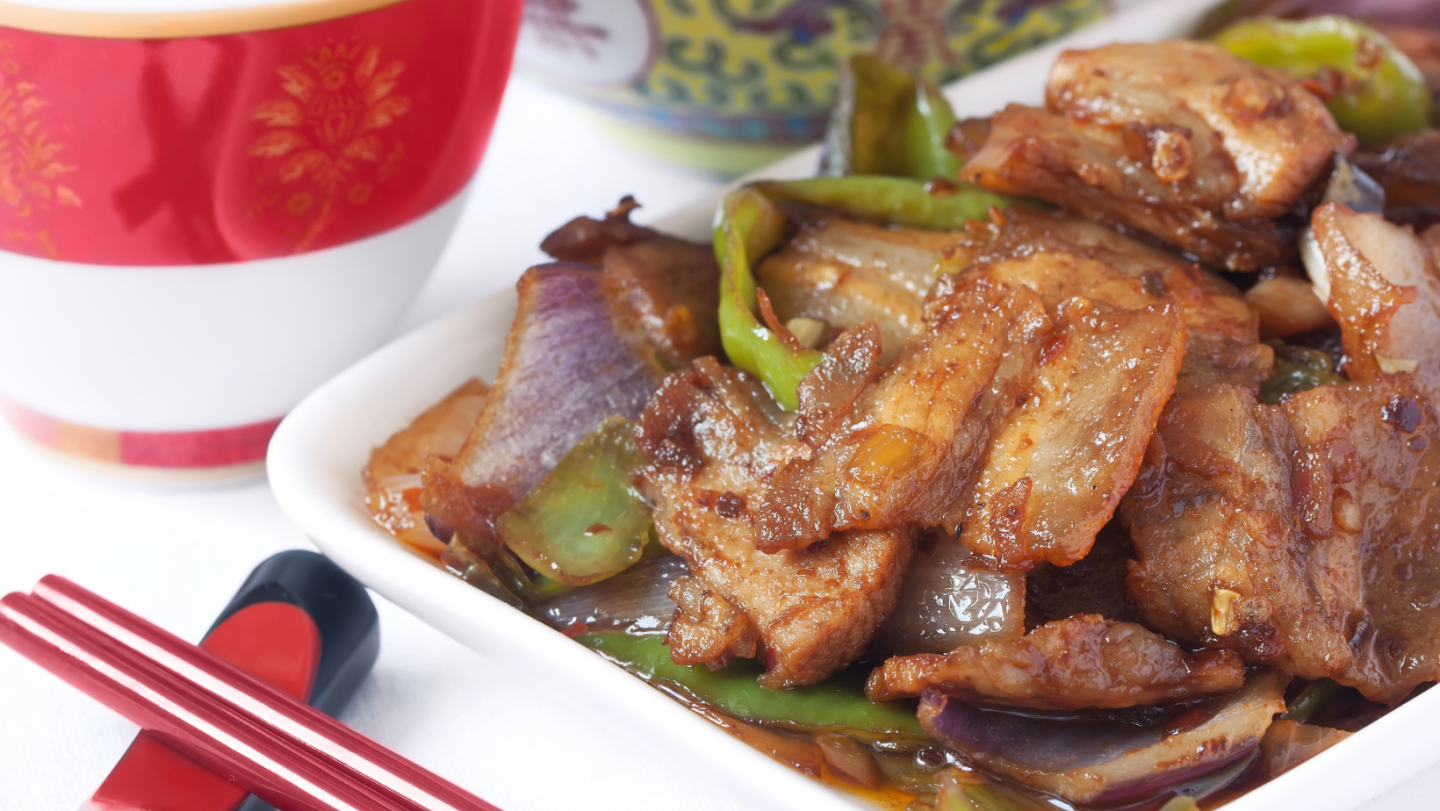
15. Twice-cooked Pork Slices
History:
Twice-cooked Pork Slices, or Hui Guo Rou (回锅肉) in Chinese, is another famous Sichuan dish with a history that dates back to the Qing Dynasty. It is said to have been a favorite dish of the Kangxi Emperor, who enjoyed the dish’s unique flavor and cooking method.
Traditional preparation:
The creation of Twice-cooked Pork Slices begins with pork belly, initially boiled alongside ginger, green onions, and Sichuan peppercorns until fully cooked. Once cooled, the pork is thinly sliced and stir-fried with an array of vegetables, including leeks, bell peppers, and garlic sprouts. A seasoning blend of doubanjiang, soy sauce, sugar, and chili oil is then added, resulting in a robust, savory, and spicy taste. True to its name, the double-cooking technique—boiling followed by stir-frying—yields a tender and flavorsome dish that holds a prominent place in Sichuan cuisine.
Check out our favorite recipe here.
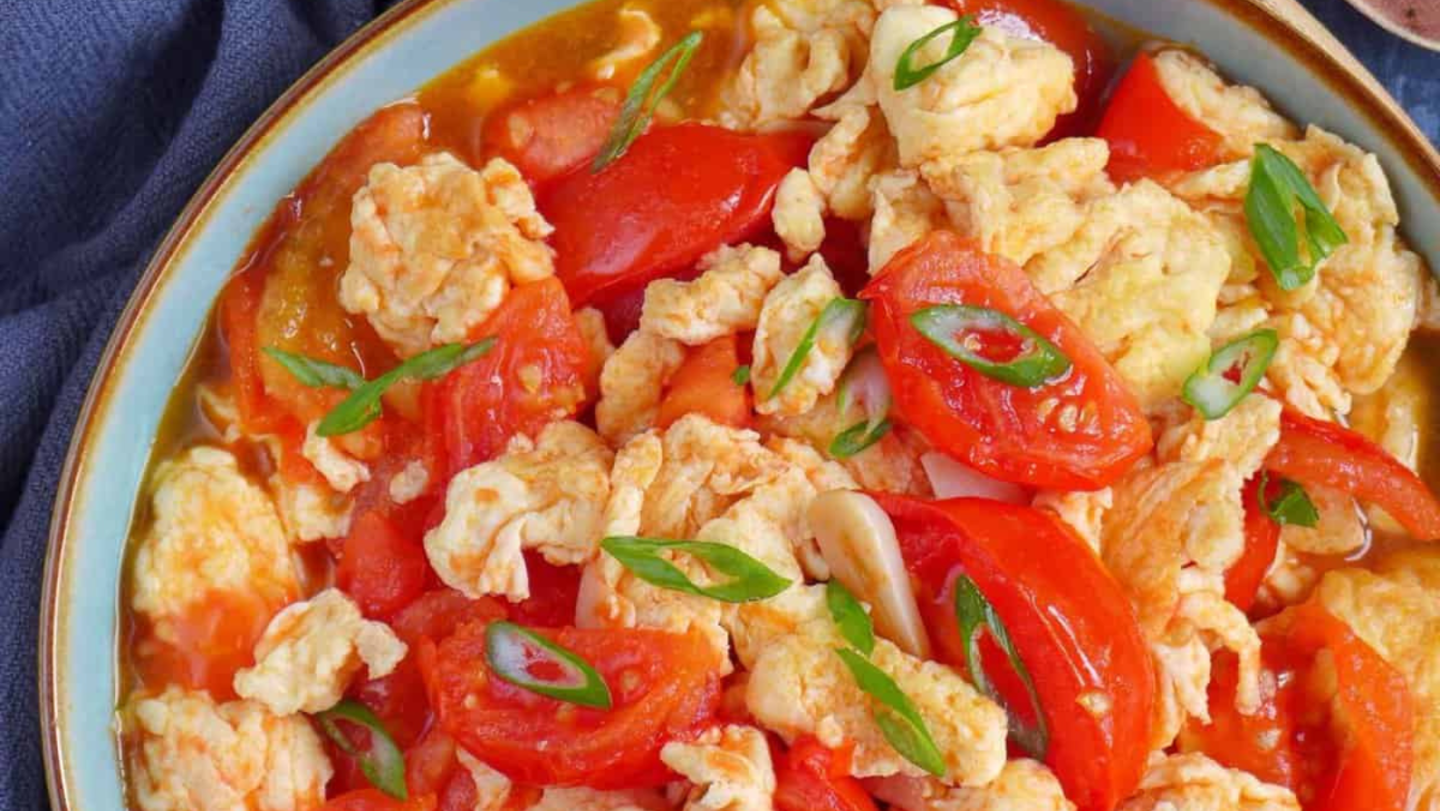
16. Fried Eggs with Tomatoes
History:
In Chinese cuisine, the simple yet adored Fried Eggs with Tomatoes, also known as Xi Hong Shi Chao Ji Dan (西红柿炒鸡蛋), holds a special place. The exact roots of the dish remain uncertain, but it is believed to have gained popularity in the 20th century as tomatoes became increasingly accessible in China. Presently, Fried Eggs with Tomatoes is regarded as an essential dish in Chinese homes, cherished for its straightforward preparation and soothing flavors.
Traditional preparation:
Fried Eggs with Tomatoes is made by first whisking eggs with salt and pepper, then frying them in oil until just set. The eggs are then removed from the pan, and fresh tomatoes are stir-fried with garlic and ginger. The eggs are added back to the pan, and the dish is seasoned with sugar, soy sauce, and a touch of vinegar. The finished dish is garnished with green onions and cilantro. Fried Eggs with Tomatoes is characterized by its bright, fresh flavors and contrasting textures, with the soft and fluffy eggs complementing the juicy and tangy tomatoes.
Check out our favorite recipe here.
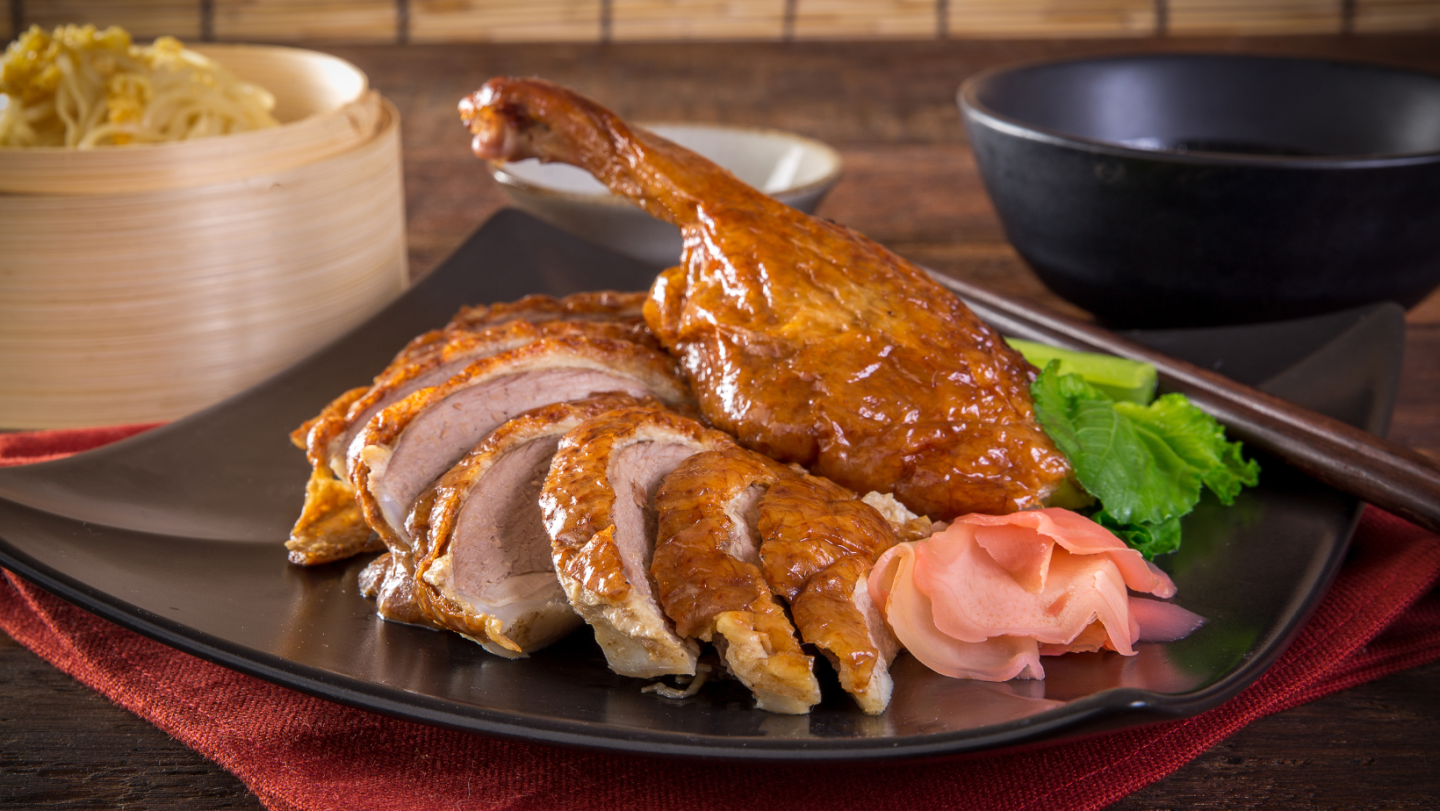
17. Roast Duck
History:
Roast Duck, or Shao Ya (烧鸭) in Chinese, has a long history in Chinese cuisine, dating back over 2,000 years to the Han Dynasty. The most famous variation of Roast Duck is Peking Duck, which originated in the imperial kitchens of Beijing during the Ming Dynasty. Peking Duck has since become a symbol of Chinese culinary culture and is enjoyed by people around the world.
Traditional preparation:
In the customary preparation of Roast Duck, an initial step involves marinating the duck with a medley of spices, including star anise, cinnamon, and ginger, followed by air-drying for an extended period. The duck is then subjected to roasting, either in an oven or suspended above open flames, until the skin achieves a crispy, golden brown appearance and the meat turns tender and succulent. Accompanied by pancakes, cucumber slices, green onions, and hoisin sauce, the roasted duck is typically served in a manner that invites diners to assemble their own wraps and relish the dish’s rich flavors.
Check out our favorite recipe here.
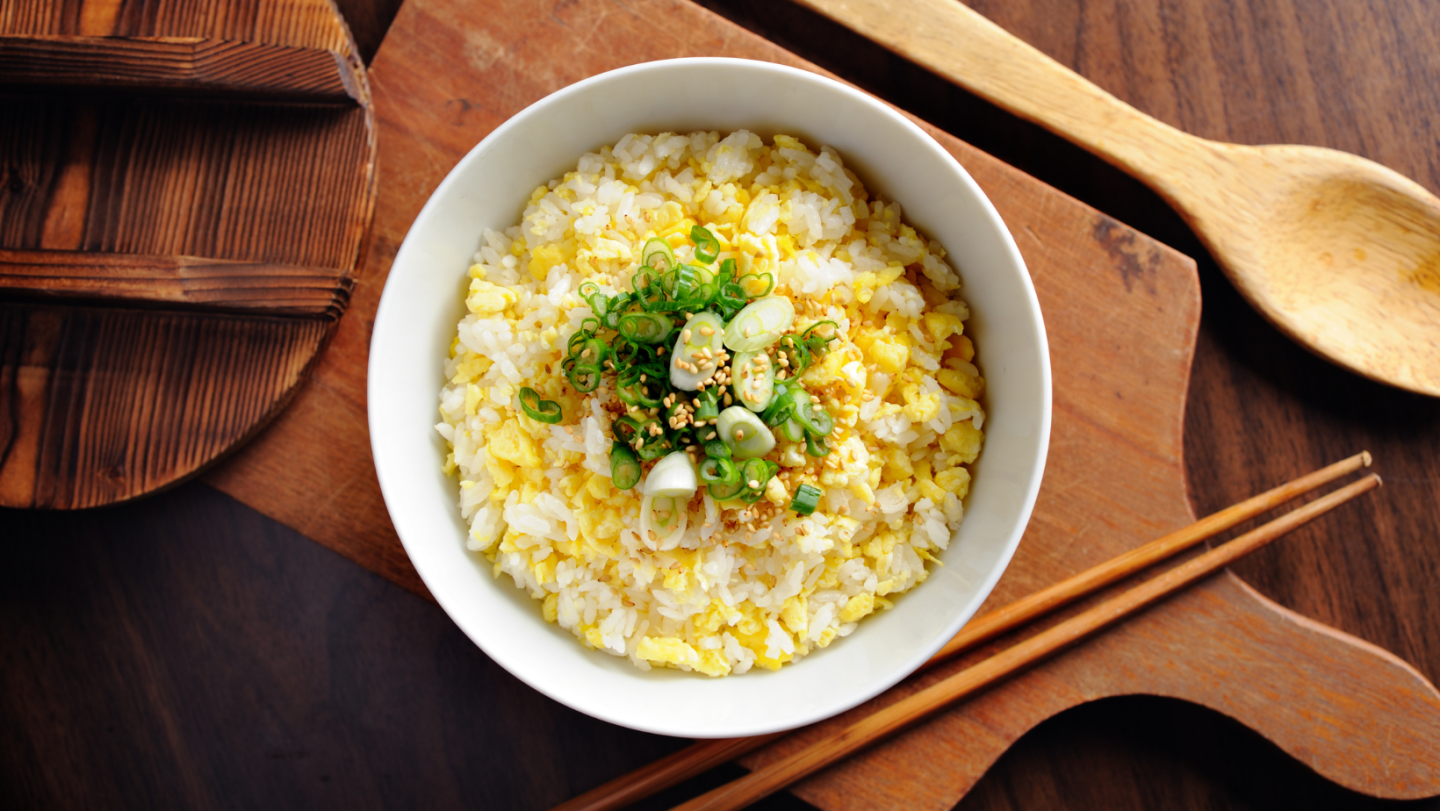
18. Egg Fried Rice
History:
Egg Fried Rice, or Chao Fan (炒饭) in Chinese, is a versatile and popular dish in Chinese cuisine. While its exact origins are unclear, it is thought to have developed as a way to make use of leftover rice and ingredients. Today, Egg Fried Rice is enjoyed as a main course or side dish in Chinese households and restaurants worldwide.
Traditional preparation:
Egg Fried Rice involves a two-step process beginning with heating oil in a wok or large frying pan, followed by scrambling beaten eggs until they are just set, after which the cooked eggs are removed. Next, diced vegetables, such as carrots, peas, and green onions, are stir-fried in additional oil. Once done, cooked and cold rice is added to the mixture, and the ingredients are quickly stir-fried together. The cooked eggs are then reintroduced to the pan, and the dish is seasoned with soy sauce, salt, and pepper. Egg Fried Rice has gained popularity for its satiating, flavorful taste and its flexibility to be tailored using a diverse array of ingredients and seasonings.
Check out our favorite recipe here.
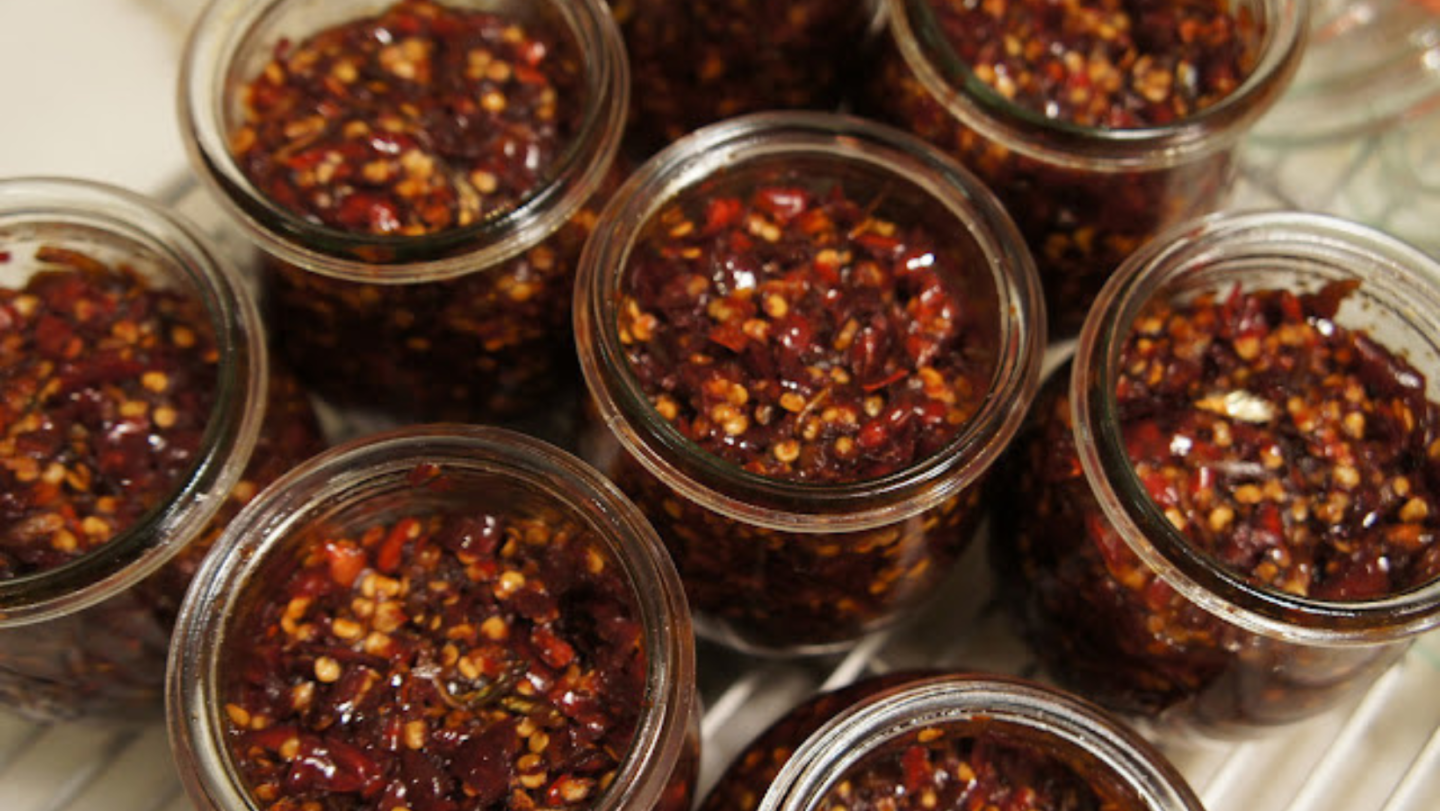
19. Hot Spicy Dip
History:
La Jiao Jiang (辣椒酱), or Hot Spicy Dip, is a multifaceted condiment boasting an extensive presence in Chinese culinary history. Tracing back to the 16th century, the introduction of chili peppers to China by Portuguese traders marked the beginning of their significance in the nation’s cuisine. Over time, chili peppers solidified their importance, particularly in the Sichuan and Hunan provinces, where the origins of the fiery dip can be found.
Traditional preparation:
The creation of Hot Spicy Dip begins with toasting dried red chili peppers in oil, unlocking their robust flavors and heat. These chilies are then transformed into a paste, combined with ingredients such as garlic, ginger, fermented soybeans, and salt. Enhancing the mixture with spices like Sichuan peppercorns and star anise, it may be simmered to produce a thick, luxurious sauce. Frequently utilized as a dipping accompaniment for meats, vegetables, and dumplings or as a foundation for stir-fries and other dishes, Hot Spicy Dip imparts a bold, fiery essence to a diverse array of Chinese cuisine.
Check out our favorite recipe here.
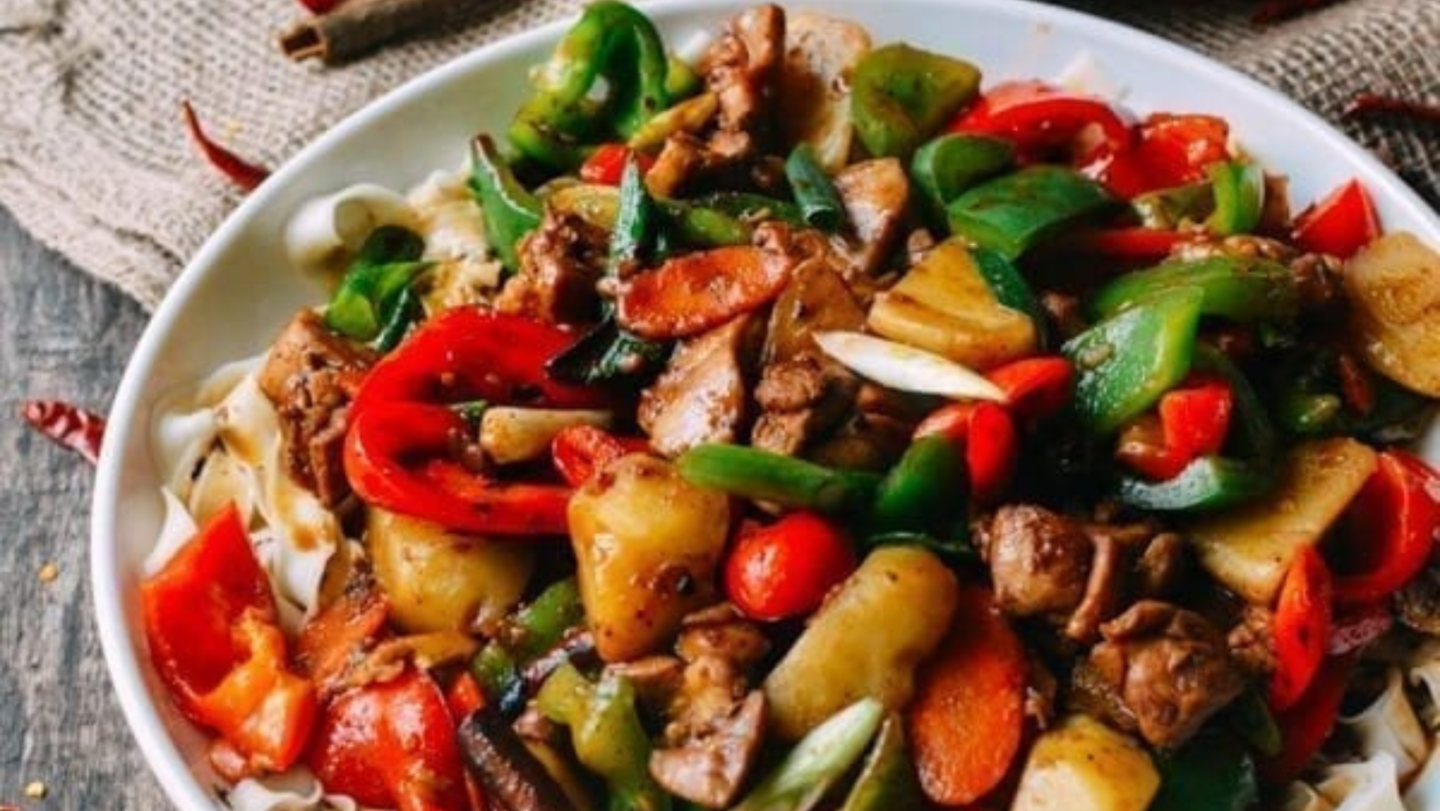
20. Xinjiang “Big Plate Chicken”
History:
Xinjiang “Big Plate Chicken”, or Da Pan Ji (大盘鸡) in Chinese, is a popular dish from the Xinjiang Uyghur Autonomous Region in northwestern China. The dish is believed to have originated in the 1980s and is a fusion of Uyghur and Han Chinese cooking techniques and ingredients. The dish has gained widespread popularity in China for its bold flavors and generous portions.
Traditional preparation:
The creation of Xinjiang’s “Big Plate Chicken” commences with marinating chicken pieces in a medley of spices, including cumin, chili powder, and garlic. Once marinated, the chicken is stir-fried alongside onions, bell peppers, and tomatoes until thoroughly cooked. Accompanying the dish is a rich sauce, derived from the cooking liquid, thickened by potato starch, and further seasoned with spices such as star anise and Sichuan peppercorns. Traditionally, this dish is presented atop broad, hand-pulled noodles that absorb the delectable sauce, contributing to the meal’s delightful texture.
Check out our favorite recipe here.
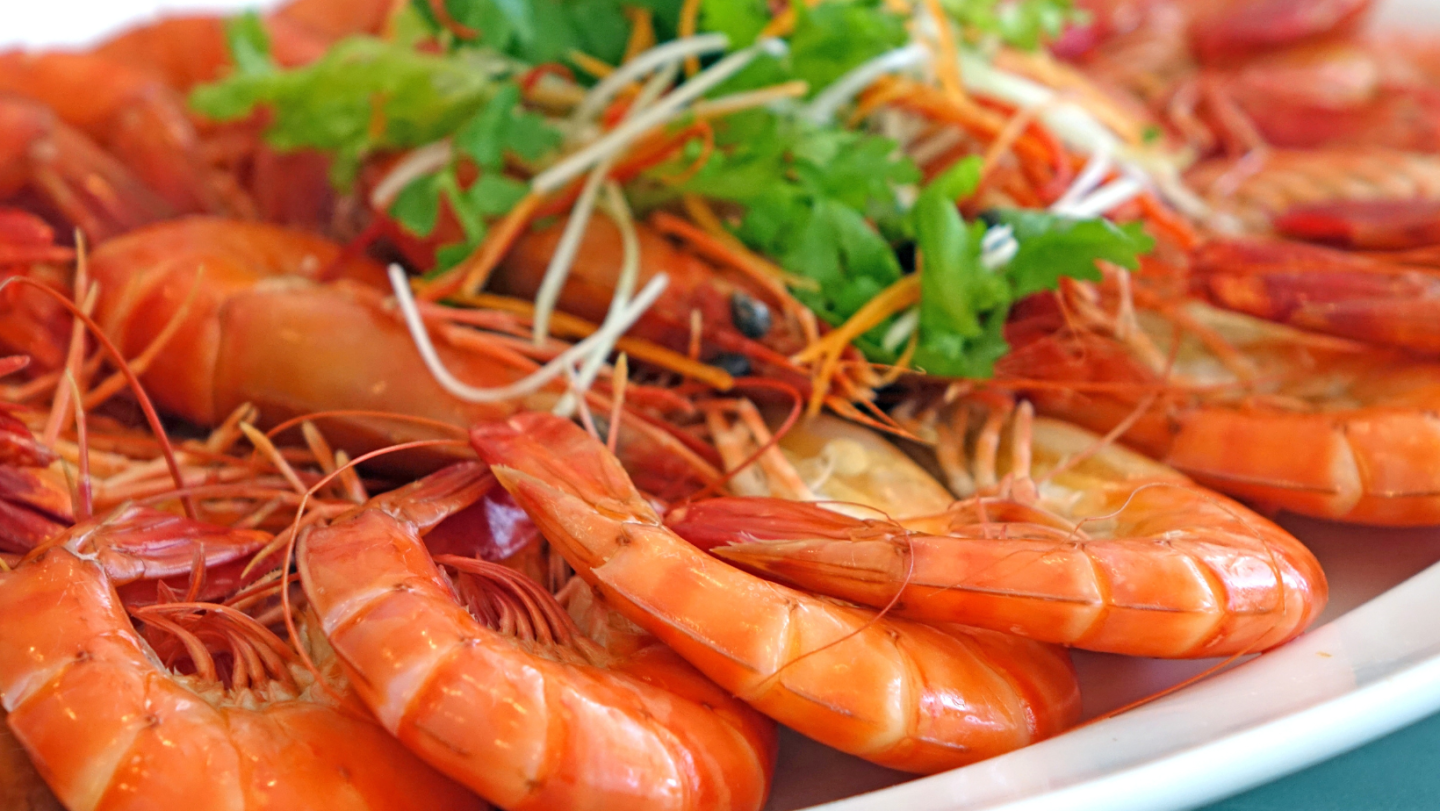
21. Scalded Shrimp
History
Scalded Shrimp, or Shui Zhu Xia (水煮虾) in Chinese, is a Sichuan-style dish that has gained popularity across China for its unique cooking technique and spicy flavors. The dish is believed to have originated in the Sichuan Basin, where the abundance of rivers and lakes made fresh shrimp a common ingredient in the local cuisine.
Traditional preparation
To prepare Scalded Shrimp, the process begins by marinating peeled and deveined shrimp in a concoction of cornstarch, egg white, and salt. A delectable broth is created by gently simmering water infused with spices such as ginger, garlic, and dried chili peppers. Next, the marinated shrimp are momentarily cooked, or “scalded”, in the bubbling broth until just perfectly cooked. This dish is typically accompanied by a zesty dipping sauce crafted from soy sauce, vinegar, chili oil, and minced garlic. Scalded Shrimp is celebrated for its delicate texture and daring, spicy flavors that accentuate the shrimp’s inherent sweetness.
Check out our favorite recipe here.
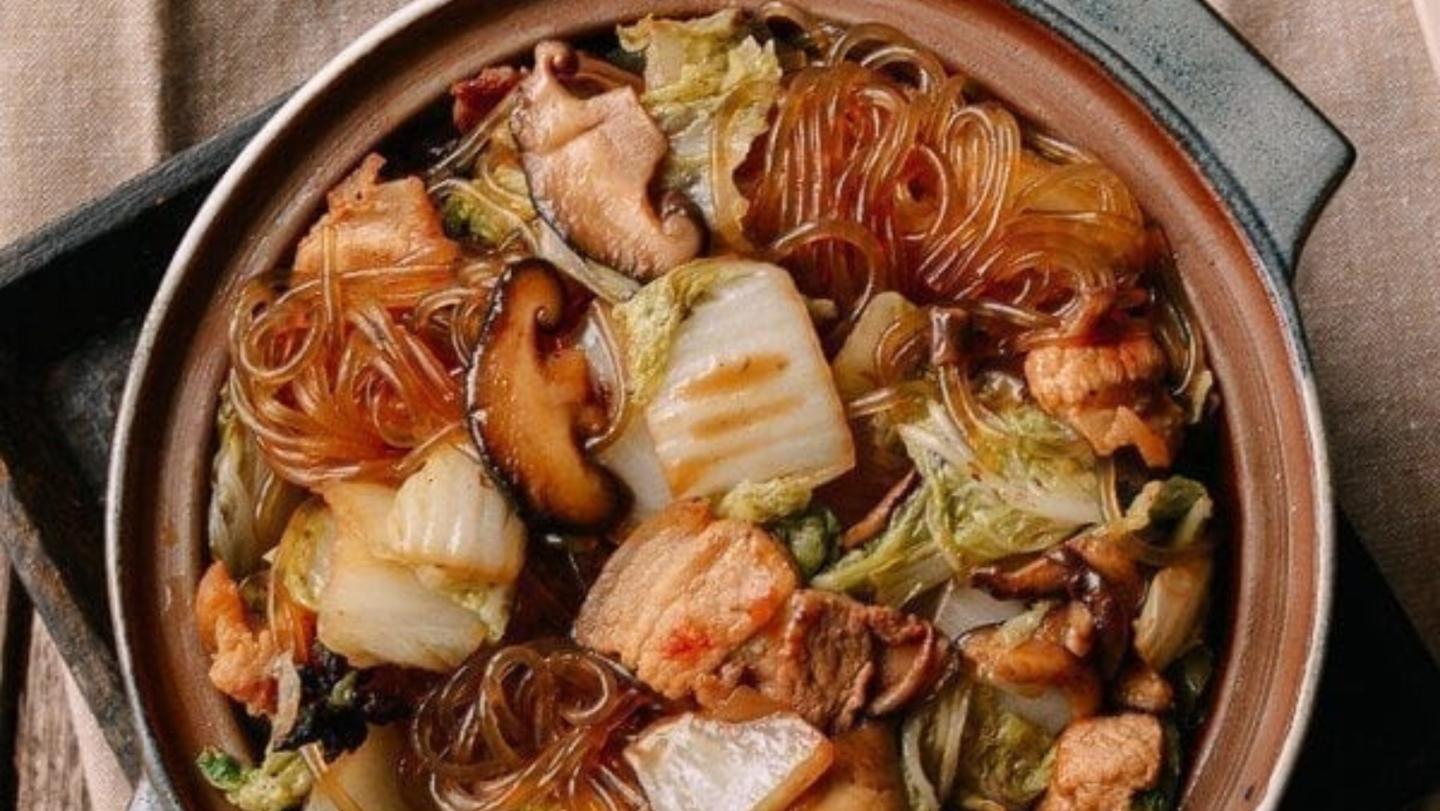
22. Braised Pork with Vermicelli
History
Braised Pork with Vermicelli, or Rou Si Fen Tiao (肉丝粉条) in Chinese, is a classic dish in Chinese cuisine with a long history. The dish is believed to have originated in Northern China, where wheat and soybean products, like vermicelli, are staple ingredients. Over time, Braised Pork with Vermicelli has become a popular dish across China and is enjoyed for its comforting flavors and satisfying textures.
Traditional preparation
The preparation of Braised Pork with Vermicelli begins with thinly slicing pork and marinating it in a fusion of soy sauce, cornstarch, and rice wine. In a separate pot, oil is warmed, and aromatic ingredients such as ginger, garlic, and green onions are stir-fried until their enticing aroma fills the air. The marinated pork is then introduced to the pot and cooked until it achieves a golden-brown hue. A braising liquid is created by incorporating soy sauce, sugar, and water or broth, in which the pork simmers until it reaches a tender consistency. Cooked vermicelli noodles are then added to the mix, allowing them to absorb the flavorsome braising liquid. The dish, Braised Pork with Vermicelli, is renowned for its succulent, savory pork and the gratifying chewiness of the vermicelli noodles.
Check out our favorite recipe here.
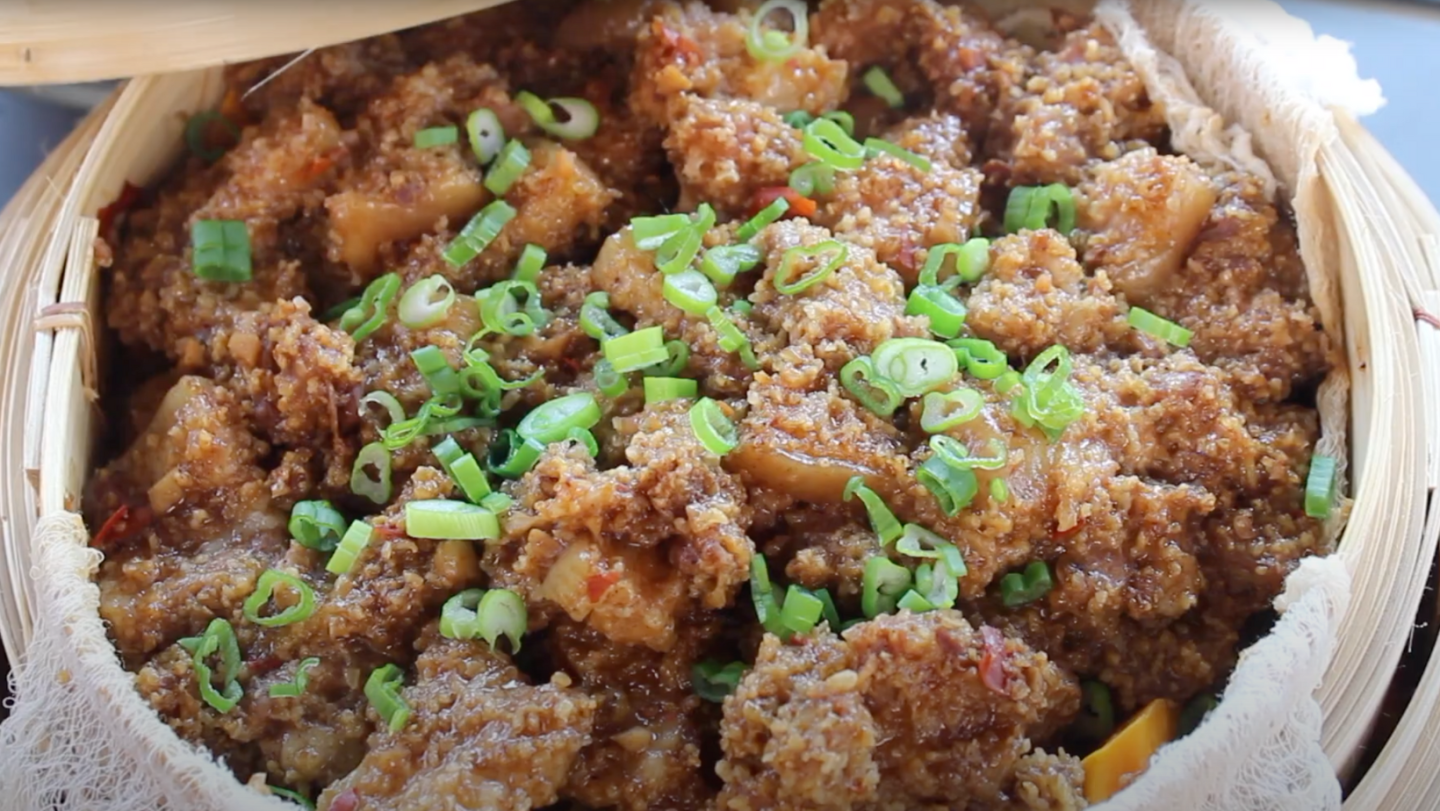
23. Steamed Rice Powder and Pork
History
Steamed Rice Powder and Pork, or Fen Zheng Rou (粉蒸肉) in Chinese, is a traditional dish from the Hunan Province in southern China. The dish has a long history dating back to the Tang Dynasty (618-907) and is known for its tender texture and rich flavors. The dish is considered a comfort food in Hunan cuisine and is often served during family gatherings and festive occasions.
Traditional preparation
Crafting the delectable dish of Steamed Rice Powder and Pork begins with selecting succulent boneless pork belly or shoulder, sliced thickly. A mouthwatering marinade, concocted from soy sauce, rice wine, fragrant ginger, pungent garlic, and a touch of sugar, bathes the pork slices. Next, a luscious coating of ground rice, which has been toasted and pulverized, is combined with an aromatic medley of spices, featuring star anise, fennel seeds, and the tingling Sichuan peppercorns. The pork slices, now swathed in this mixture, are nestled into a heatproof dish and steamed over intense heat for approximately 1-2 hours. This meticulous process ultimately results in melt-in-your-mouth tender meat, encased in a soft, sticky crust formed by the rice powder. The memorable flavors and distinctive textures of Steamed Rice Powder and Pork are what truly set it apart.
Check out our favorite recipe here.
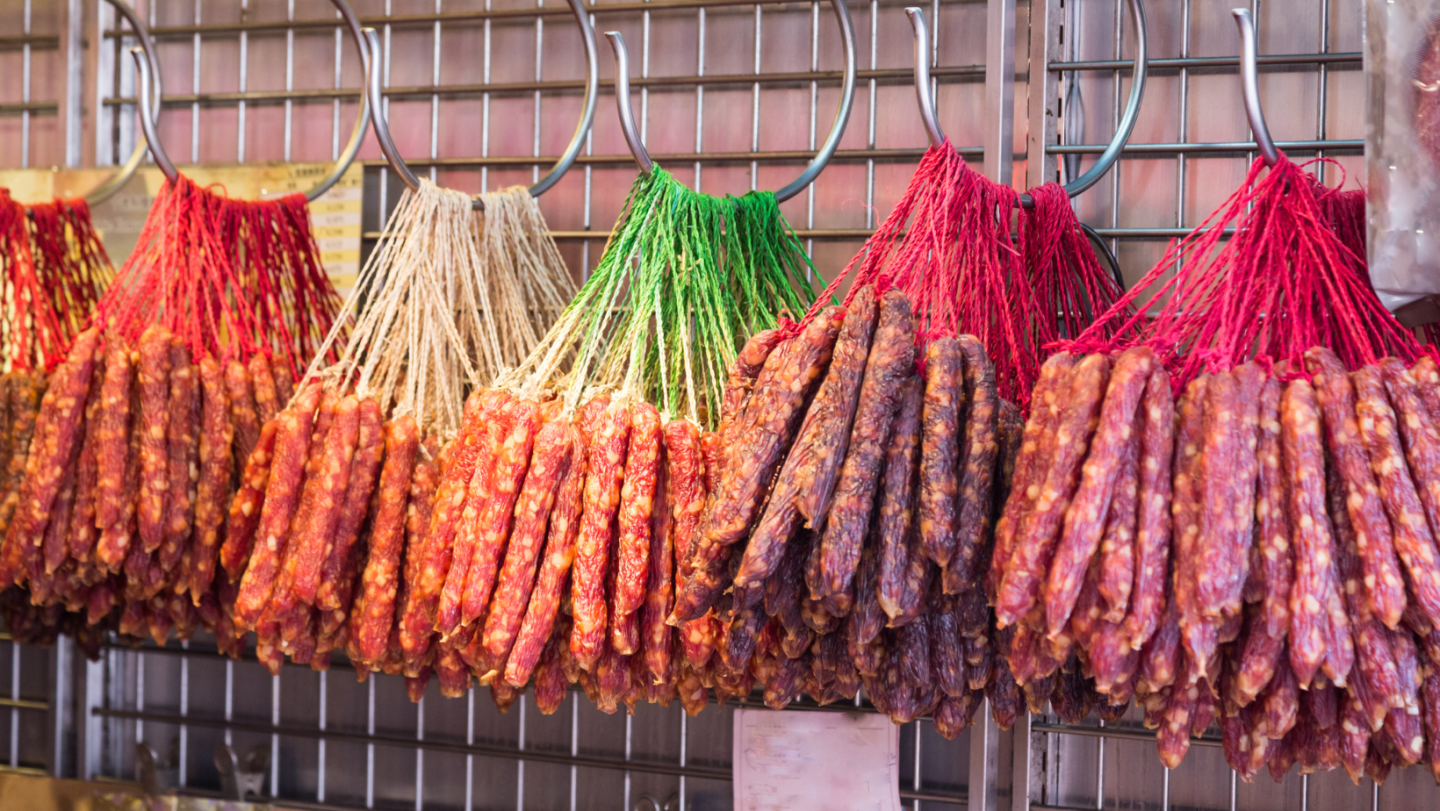
24. Chinese Sausage
History
Chinese Sausage, or Lap Cheong (腊肠) in Chinese, is a type of traditional preserved meat product that dates back to ancient China. The practice of making sausages, especially in southern China, can be traced back to the Qin Dynasty (221-206 BC). Chinese Sausage has evolved over time and now includes various regional varieties with distinct flavors and ingredients.
Traditional preparation
While pork is the standard choice for crafting Chinese Sausage, alternative options such as chicken or duck offer a unique twist. To create these enticing sausages, the meat is meticulously minced and combined with a harmony of fat, sugar, salt, and an array of seasonings, including soy sauce, rice wine, and exotic spices like star anise and Sichuan peppercorns. Skillfully encased in natural casings, the sausages are left to air-dry in a cool, well-ventilated space for several weeks. The versatility of Chinese Sausages shines as they can be relished in a variety of preparations—steamed, stir-fried, or incorporated into dishes like claypot rice or fried rice—infusing a delectable, savory essence into each bite.
Check out our favorite recipe here.
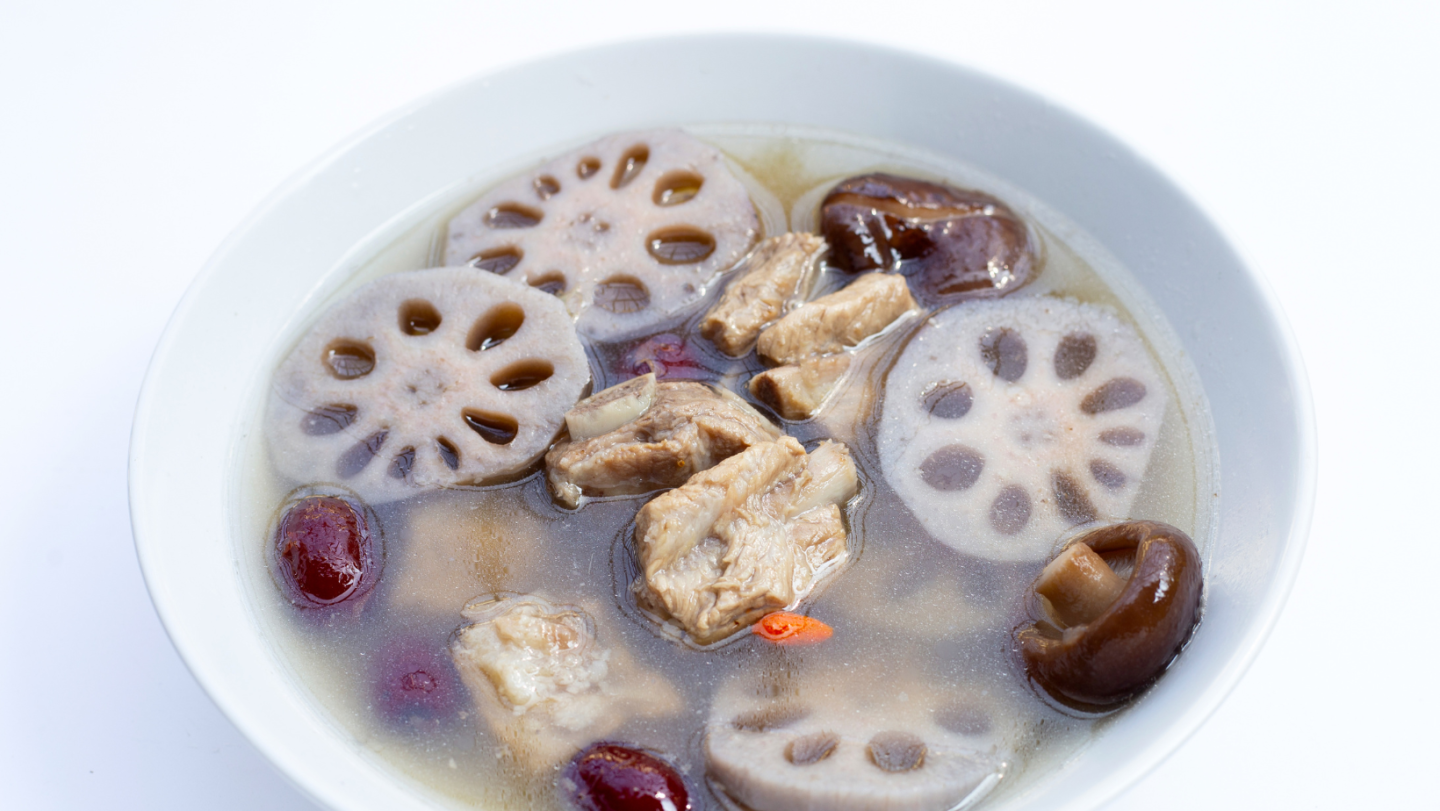
25. Lotus Root and Rib Soup
History
Savored for generations, Lotus Root and Rib Soup, or Lian Ou Pai Gu Tang (莲藕排骨汤) in Chinese, is a cherished traditional Chinese soup. Its prominence is most notable in the southern regions of China, where the esteemed lotus root frequently graces the local culinary scene. Lotus root boasts a wealth of nutritional advantages, encompassing an impressive array of vitamins and minerals. As a testament to its healthful properties, traditional Chinese medicine practitioners have long relied on lotus root to bolster digestive health and promote overall well-being.
Traditional preparation
To prepare Lotus Root and Rib Soup, pork ribs are first blanched in boiling water to remove any impurities. The ribs are then simmered in water with sliced lotus root, ginger, and sometimes other ingredients like red dates or goji berries, for several hours until the meat is tender and the flavors are well combined. The soup is typically seasoned with salt and white pepper and garnished with chopped green onions and cilantro. Lotus Root and Rib Soup is enjoyed for its rich, meaty flavor and the contrasting crunchy texture of the lotus root.
Check out our favorite recipe here.

26. Peking Duck
History
Peking Duck, also known as Beijing Roast Duck (北京烤鸭), boasts a fabled history that spans back a millennium. Its origins can be traced to the imperial courts of the Yuan Dynasty (1271-1368) where it was first enjoyed by royalty. As time passed, this succulent dish gained popularity among the masses during the Ming Dynasty (1368-1644). Revered as a symbol of Chinese culinary excellence, Peking Duck is a staple at celebratory events and grandiose banquets.
Traditional preparation
Peking Duck is traditionally prepared using a specific breed of duck, known for its thin skin and tender meat. The duck is first marinated with a blend of spices, including star anise, cloves, and cinnamon. Then, the duck is inflated with air through the neck to separate the skin from the meat, allowing the skin to crisp up during roasting. The duck is then glazed with a mixture of maltose syrup and water, and hung to dry for several hours.
The duck is roasted in an oven, either by hanging it from a hook or placing it on a rack, allowing the heat to circulate evenly around the duck. This process crisps the skin and renders the fat, while the meat remains tender and juicy. Once roasted, the duck is traditionally carved tableside, with the crispy skin and meat served separately. Peking Duck is typically served with thin pancakes, spring onions, cucumber, and hoisin sauce, allowing diners to create their own wraps.
Check out our favorite recipe here.
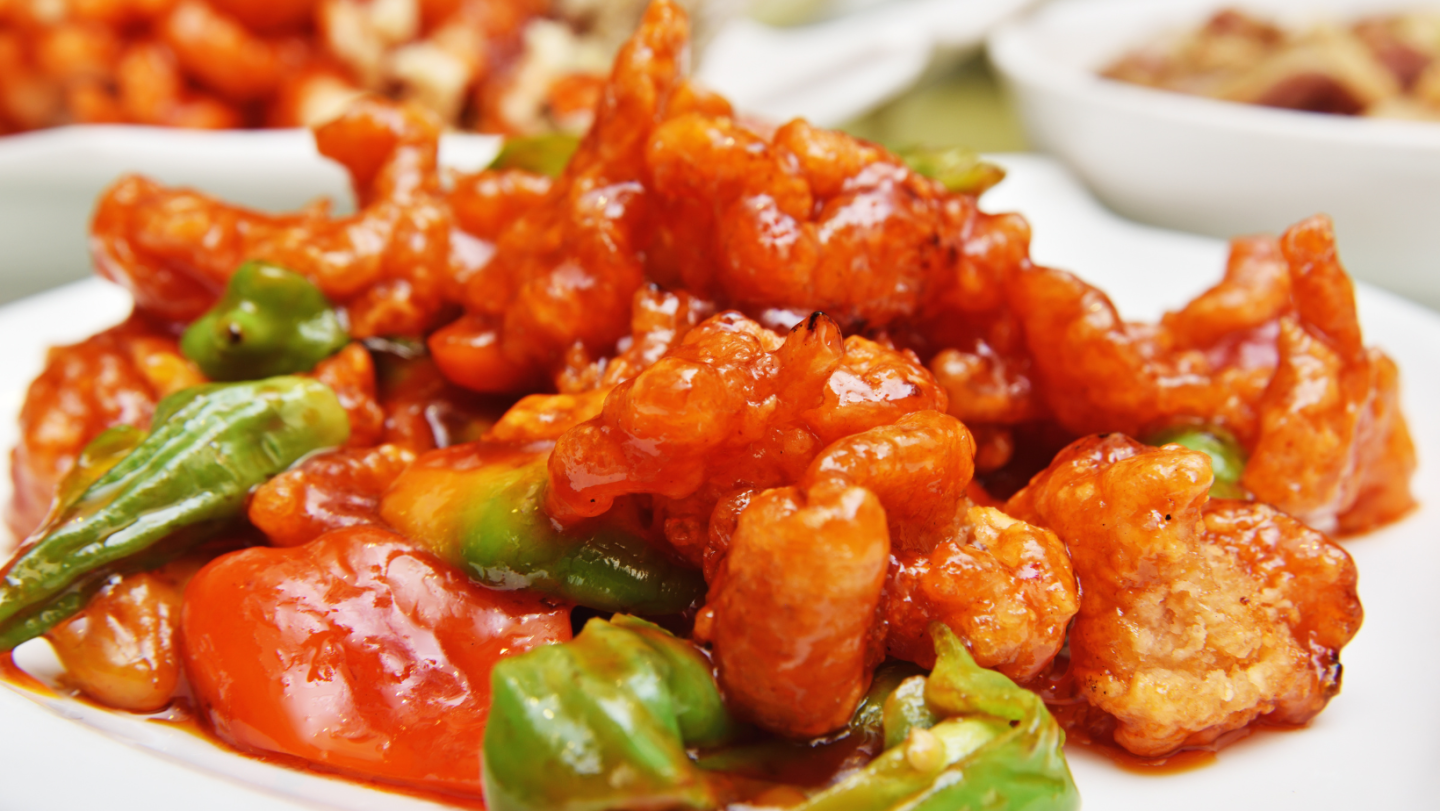
27. Sweet and Sour Pork
History
Gu Lao Rou (咕噜肉), commonly known as Sweet and Sour Pork, holds a cherished place in the annals of Chinese cuisine, delighting palates for centuries. Tracing its roots back to the southern region of China, specifically the Guangdong Province, this dish flourished in an area where the interplay of sweet and sour flavors captivated the locals. Gradually, the dish’s appeal transcended borders and reached global recognition, ushering in an array of regional adaptations and variations.
Traditional preparation
To create the renowned Sweet and Sour Pork, one begins by dicing the pork (customarily loin or tenderloin) into manageable morsels and immersing them in a marinade comprised of soy sauce, Shaoxing wine, and cornstarch. Once marinated, the pork is deep-fried to achieve a golden, crispy exterior. Concurrently, the sweet and sour sauce is concocted by blending sugar, vinegar, ketchup, and pineapple juice, with cornstarch added for thickness. The crispy pork is then swiftly stir-fried alongside the sauce and an assortment of vegetables, including bell peppers, onions, and pineapple chunks. This culinary creation is celebrated for its enticing medley of flavors, harmonizing the sugary notes of pineapple with the zesty kick of vinegar.
Check out our favorite recipe here.
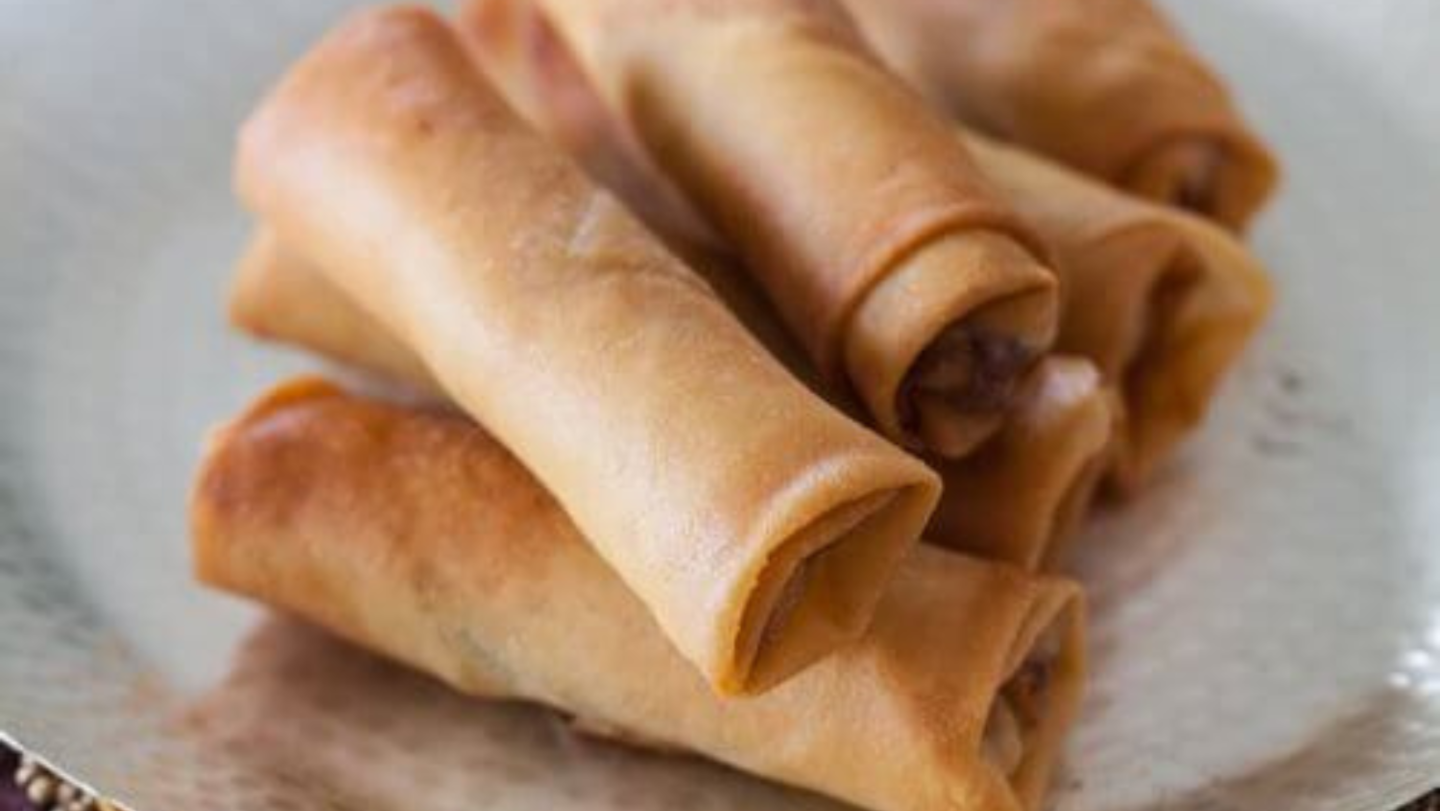
28. Spring Rolls
History
Spring Rolls, also known as 春卷 (chūn juǎn) in Mandarin, are a quintessential Chinese snack or appetizer that can be traced back to the Eastern Jin Dynasty (approximately 265-420 AD). The dish was originally consumed during the Spring Festival, which is why they are called “spring” rolls. As time passed, spring rolls became popular all year round, and their popularity spread to other parts of Asia, including Vietnam, Indonesia, and the Philippines.
The origin of spring rolls is often linked to the tradition of eating fresh, seasonal vegetables during the Spring Festival, symbolizing the renewal of life and the arrival of spring. Over the centuries, regional variations and adaptations have emerged, reflecting the diverse culinary traditions and ingredients available in different parts of China and neighboring countries.
Traditional Preparation
The traditional preparation of spring rolls involves a two-step process: preparing the filling and wrapping the rolls. The filling typically consists of a combination of vegetables, such as cabbage, carrots, bean sprouts, and mushrooms, along with some protein like minced pork, shrimp, or tofu. Seasonings like soy sauce, oyster sauce, and sesame oil are added for flavor.
The key to making spring rolls is the thin, delicate wrapper, which is traditionally made from wheat flour, water, and a touch of salt. The dough is rolled out into thin circles, and a spoonful of filling is placed in the center. The edges of the wrapper are then folded over the filling, and the roll is sealed by moistening the edges with a bit of water or a flour-water mixture.
Once the spring rolls are assembled, they can be either deep-fried or baked until they are golden brown and crispy. They are usually served with a dipping sauce, such as sweet and sour sauce, soy sauce, or a spicy chili sauce.
As spring rolls have become popular globally, many variations exist, including non-traditional ingredients and fusion flavors, as well as adaptations to cater to different dietary preferences, such as vegetarian or gluten-free versions.
Check out our favorite recipe here.
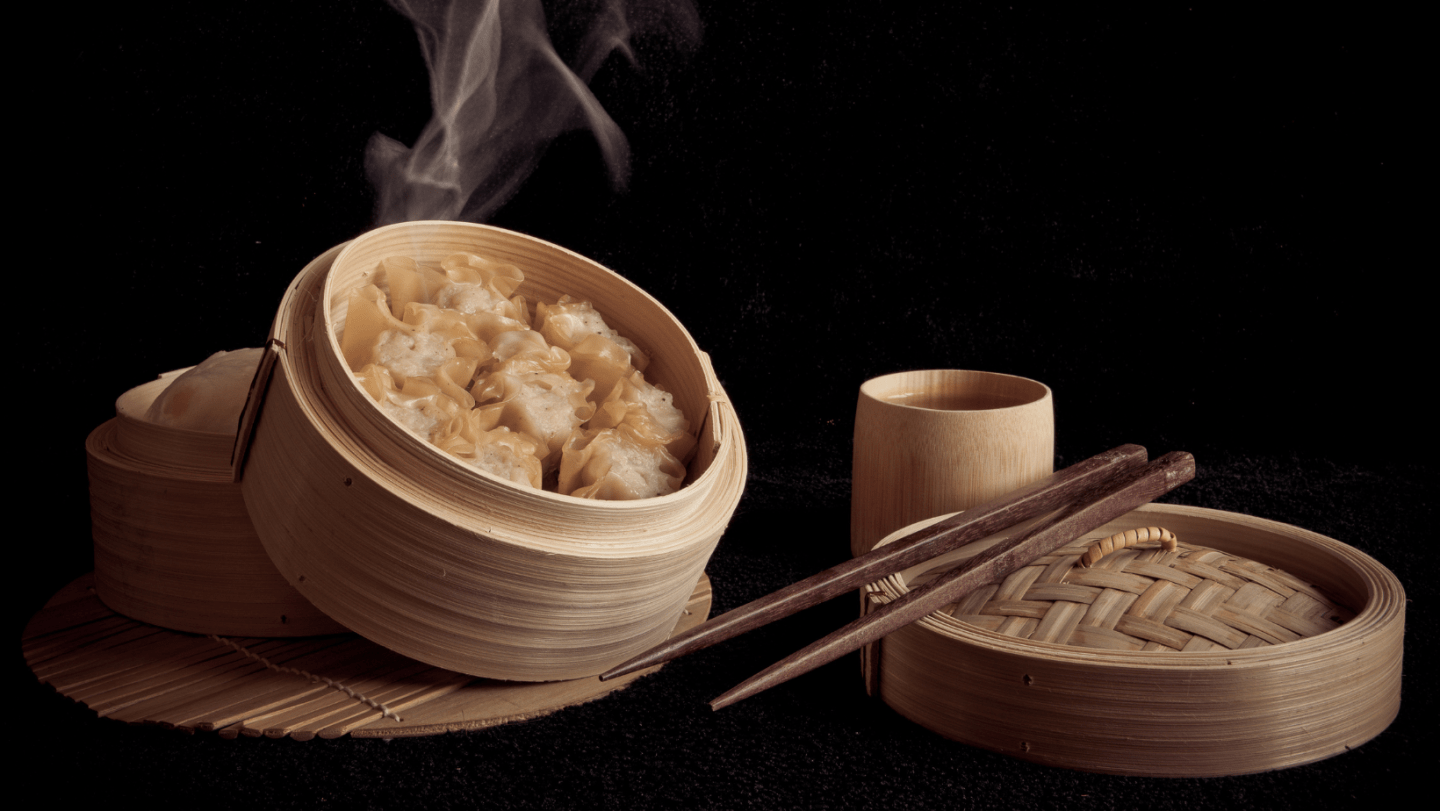
Chinese Food Culture
The tapestry of Chinese food culture is a vibrant and diverse reflection of the nation’s extensive and ancient history. The culinary landscape presents an exhaustive range of flavors, textures, and cooking practices that fluctuate depending on the region, season, and personal taste. In this section, we will explore the various courses, characteristics, and philosophical principles that encapsulate the essence of Chinese food culture.
Type of Courses
Cold Dishes
Cold dishes, or 凉菜 (liáng cài), are served at the beginning of a meal and typically consist of marinated vegetables, cold meats, or seafood. They are meant to stimulate the appetite and prepare the palate for the flavors of the following dishes.
Hot Dishes
Hot dishes, or 热菜 (rè cài), form the main part of a Chinese meal and showcase a wide variety of cooking techniques, including stir-frying, deep-frying, braising, roasting, and steaming. Hot dishes often incorporate proteins such as poultry, meat, fish, or tofu, as well as vegetables, mushrooms, and other ingredients.
Soups and Congees
Soups and congees, or 汤粥 (tāng zhōu), play an essential role in Chinese food culture, providing nourishment and comfort. Soups can range from light, clear broths to hearty, thick stews, while congees are rice porridges that can be either sweet or savory.
Staple Food and Xiaochi
Staple foods, or 主食 (zhǔ shí), are the foundation of a Chinese meal and include rice, noodles, steamed buns, and dumplings. Xiaochi, or 小吃 (xiǎo chī), are small bites or snacks that can be enjoyed at any time of the day and include items such as spring rolls, baozi, and jianbing.
Features of the Food
1. Varied Flavors
Chinese cuisine is famous for its wide range of flavors, from the spicy heat of Sichuan dishes to the delicate, subtle flavors of Cantonese cuisine. The diversity of flavors reflects the vastness of the country and the rich culinary traditions of its many regions.
2. Different Dishes in Different Seasons
Chinese food culture emphasizes the importance of eating seasonally, with dishes and ingredients changing according to the time of year. This practice not only ensures that the freshest ingredients are used but also helps maintain a balanced diet throughout the year.
3. Aesthetic Sense
Chinese cuisine places great importance on the visual appeal of dishes, with color, shape, and presentation all carefully considered. This focus on aesthetics reflects the Chinese belief that food should be a feast for the eyes as well as the palate.
4. Combining Food and Chinese Medicine
Traditional Chinese medicine and culinary practices are closely intertwined, with food being viewed as a means of maintaining health and balance in the body. Ingredients are often chosen for their medicinal properties, and specific combinations of foods are believed to have particular health benefits.
5. Philosophical Thinking in Chinese Food Culture
Chinese food culture is deeply rooted in the country’s philosophical traditions, particularly the concepts of balance and harmony. This can be seen in the emphasis on balancing flavors, textures, and colors in dishes, as well as the idea that food can help maintain balance within the body. The Chinese culinary philosophy also reflects the Confucian ideal of moderation and the Taoist belief in the interconnectedness of all things.
Overall, Chinese food culture is a fascinating and complex world that reveals much about the country’s history, regional differences, and philosophical beliefs. It offers a diverse array of flavors, techniques, and ingredients that continue to captivate and inspire food lovers around the globe.

Top 4 Cities to Enjoy Chinese Food
Each region of China’s vast culinary landscape boasts its own unique flavors and dishes. Here are the top 4 cities where you can enjoy some of the best Chinese food the country has to offer, along with a brief introduction to their culinary specialties.
1. Beijing
As the capital of China, Beijing’s cuisine represents a mix of the country’s diverse regional flavors. However, its signature dishes are rooted in the traditions of imperial cuisine, offering a taste of the city’s rich history.
Specialties:
- Peking Duck: A world-renowned dish, featuring crispy skin and tender meat, often served with pancakes, scallions, and hoisin sauce.
- Jiaozi (Dumplings): A staple food in Northern China, these delicious morsels can be filled with various ingredients, such as pork, shrimp, or vegetables.
- Zhajiangmian: Noodles served with a rich, savory sauce made from soybean paste, minced pork, and various vegetables.
2. Chengdu
Chengdu, the capital of Sichuan Province, is famous for its spicy and bold flavors. The city was designated a UNESCO City of Gastronomy in 2010, reflecting its profound culinary history and vibrant food scene.
Specialties:
- Mapo Tofu: Soft tofu cooked in a spicy, numbing sauce made from Sichuan peppercorns and chili paste.
- Kung Pao Chicken: A popular dish featuring diced chicken, peanuts, and vegetables stir-fried in a spicy sauce.
- Hot Pot: A communal dining experience where ingredients such as thinly sliced meat, seafood, tofu, and vegetables are cooked at the table in a spicy broth.
3. Shanghai
As a cosmopolitan port city, Shanghai’s cuisine is characterized by its diverse influences and sophisticated flavors. Known as “Hu cuisine,” Shanghai’s culinary style often features a combination of sweet and savory elements.
Specialties:
- Xiaolongbao: Soup dumplings filled with minced pork and savory broth, often served with a dipping sauce made from soy sauce, vinegar, and ginger.
- Shengjianbao: Pan-fried buns filled with pork and soup, featuring a crispy bottom and a soft, pillowy top.
- Hong Shao Rou (Red-Braised Pork): Tender cubes of pork belly cooked in a rich, sweet, and savory sauce made from soy sauce, sugar, and various spices.
4. Guangzhou
Nestled within Guangdong Province, Guangzhou, once called Canton, holds the distinction of being the origin of the much-celebrated Cantonese cuisine. Renowned for its elegant and subtle flavors, the city takes particular pride in its cherished dim sum culture.
Specialties:
- Dim Sum: An assortment of bite-sized dishes, such as har gow (shrimp dumplings), siu mai (pork and shrimp dumplings), and char siu bao (barbecue pork buns), served in small steamer baskets or on small plates.
- Wonton Noodle Soup: Thin egg noodles served in a clear, flavorful broth, accompanied by delicate wontons filled with shrimp, pork, or both.
- White Cut Chicken: Poached chicken served with a dipping sauce made from ginger, scallions, and salt.
Each of these cities offers a unique and unforgettable culinary experience that showcases the incredible diversity of Chinese cuisine. No matter which city you choose to visit, you’re sure to be treated to an unforgettable gastronomic adventure.
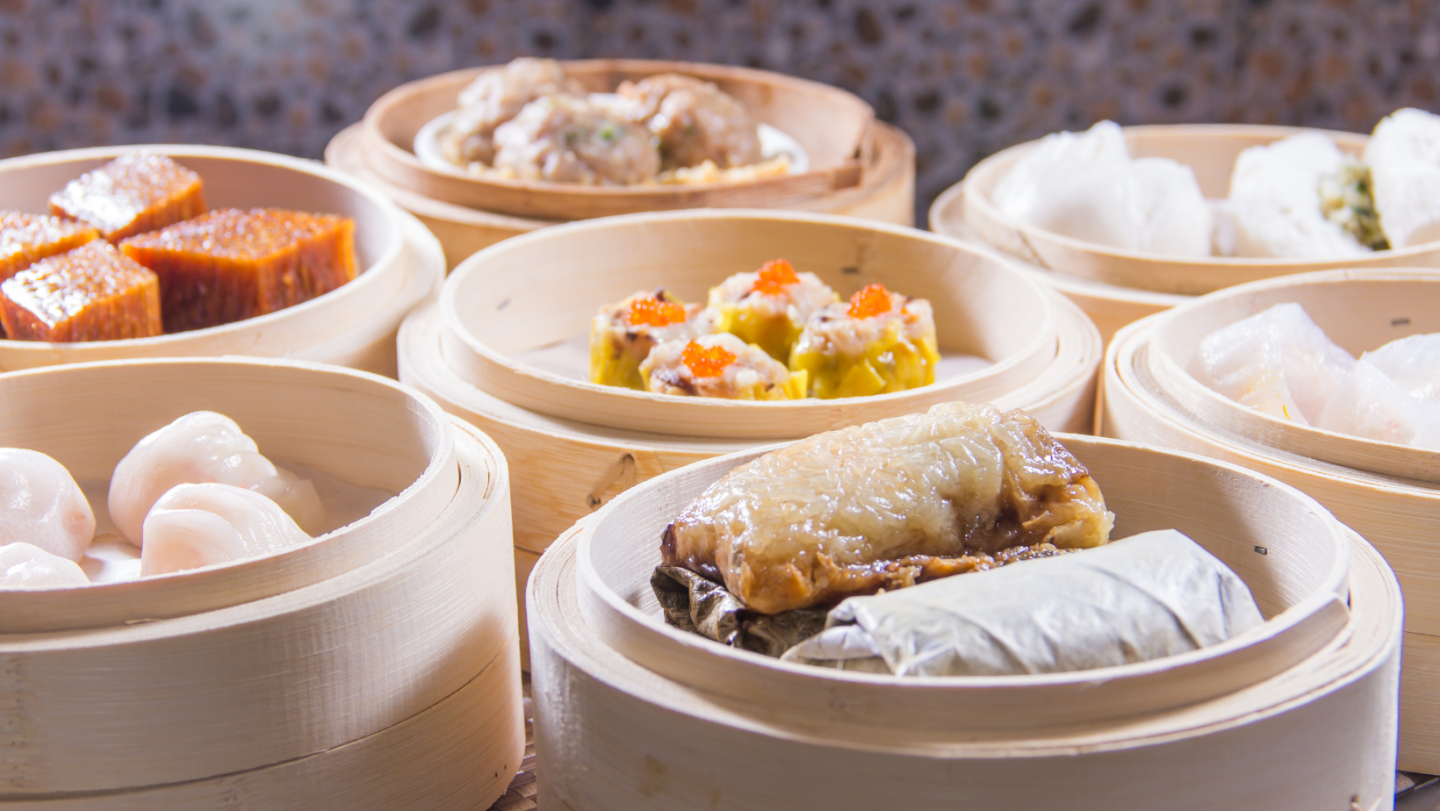
Popular Foods in China FAQ
What are China’s most popular foods?
Some of China’s most popular foods include Peking Duck, Kung Pao Chicken, Mapo Tofu, Dumplings, Xiaolongbao, Hot Pot, and Fried Rice. These dishes have gained international recognition for their delicious flavors and unique cooking techniques.
What is the traditional food in China?
China’s traditional food varies greatly depending on the region. However, some well-known traditional dishes include Jiaozi (dumplings), Baozi (steamed buns), Peking Duck, and Zongzi (sticky rice wrapped in bamboo leaves). Chinese cuisine is deeply rooted in the country’s history and culture, with many dishes having symbolic meanings or being associated with certain festivals and celebrations.
What are the 8 types of food in China?
The 8 types of food in China, often referred to as the “Eight Great Regional Cuisines,” are:
- Shandong (Lu) Cuisine
- Sichuan (Chuan) Cuisine
- Guangdong (Yue) Cuisine
- Fujian (Min) Cuisine
- Jiangsu (Su) Cuisine
- Zhejiang (Zhe) Cuisine
- Hunan (Xiang) Cuisine
- Anhui (Hui) Cuisine
These culinary styles represent the diverse flavors, ingredients, and techniques found throughout the different regions of China.
What are the Chinese 4 types of food?
The Chinese 4 types of food, also known as the “Four Major Cuisines,” are:
- Shandong (Lu) Cuisine
- Sichuan (Chuan) Cuisine
- Guangdong (Yue) Cuisine
- Jiangsu (Su) Cuisine
These four culinary styles are considered the most influential and representative of Chinese cuisine, showcasing the diverse flavors and techniques of the country’s vast culinary landscape.
Final Thoughts
China’s diverse culinary scene is a reflection of its rich history and culture. From the spicy flavors of Sichuan to the delicate tastes of Cantonese cuisine, each region offers its own unique dishes and cooking techniques. Throughout this exploration of Chinese food, we’ve covered a variety of popular dishes, their histories, and traditional preparations. As you’ve seen, China’s culinary landscape is vast and varied, with each dish telling a story of the people and the region it comes from. Chinese cuisine is not just about delicious flavors, but also a testament to the ingenuity and creativity of the Chinese people, making it a truly fascinating and enjoyable experience for food lovers everywhere.
If you’re looking for popular dishes from other cuisines, take a look at our post about the most popular foods in Mexico!
